

FEATURED EXPERIENCE NO. 05
Visit the site of adolf hitler's führerbunker, the nazi leader's subterranean sanctuary and final command centre.
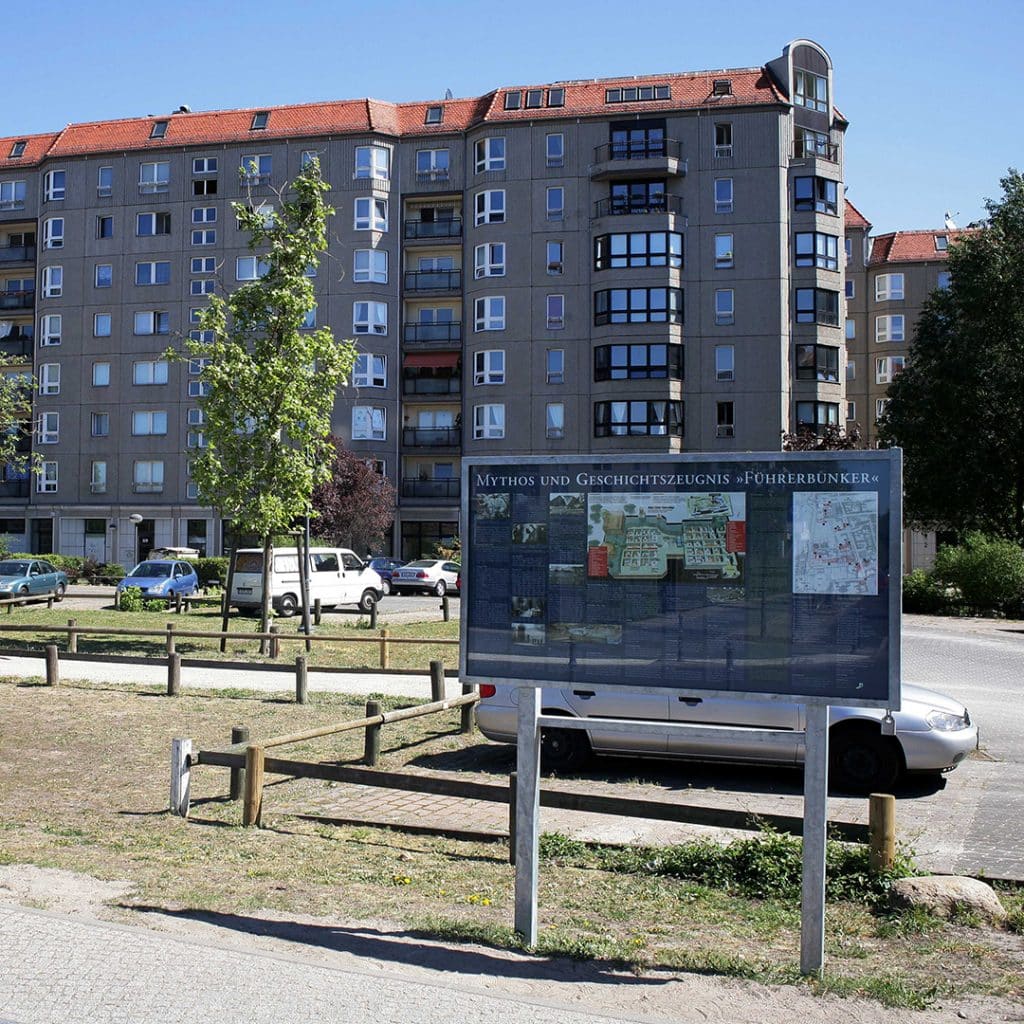
Did you know...
The apartment buildings surrounding the site of the Führerbunker now were built in the 1980s by the East German government, as luxury apartment houses for important members of East German society.
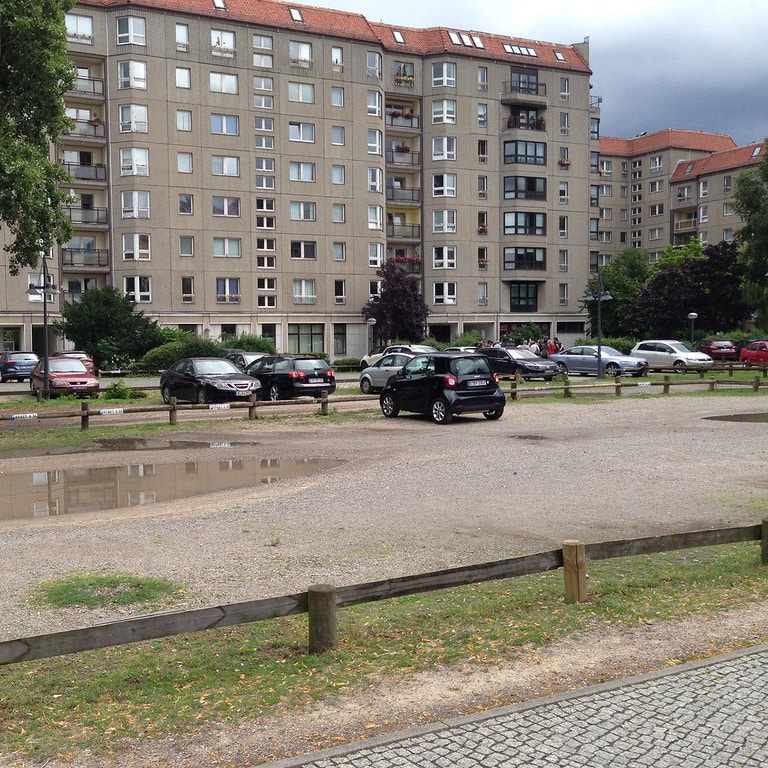
The Führerbunker
- Gertrud-Kolmar-Strasse, 10117 Berlin
- S-bahn Brandenburger Tor
Some useful links related to the Brandenburg Gate:
FEATURED EXPERIENCES

Walk Through The Brandenburg Gate

Explore The State Musems On Museum Island

Visit The Berlin TV Tower – The Fernsehturm
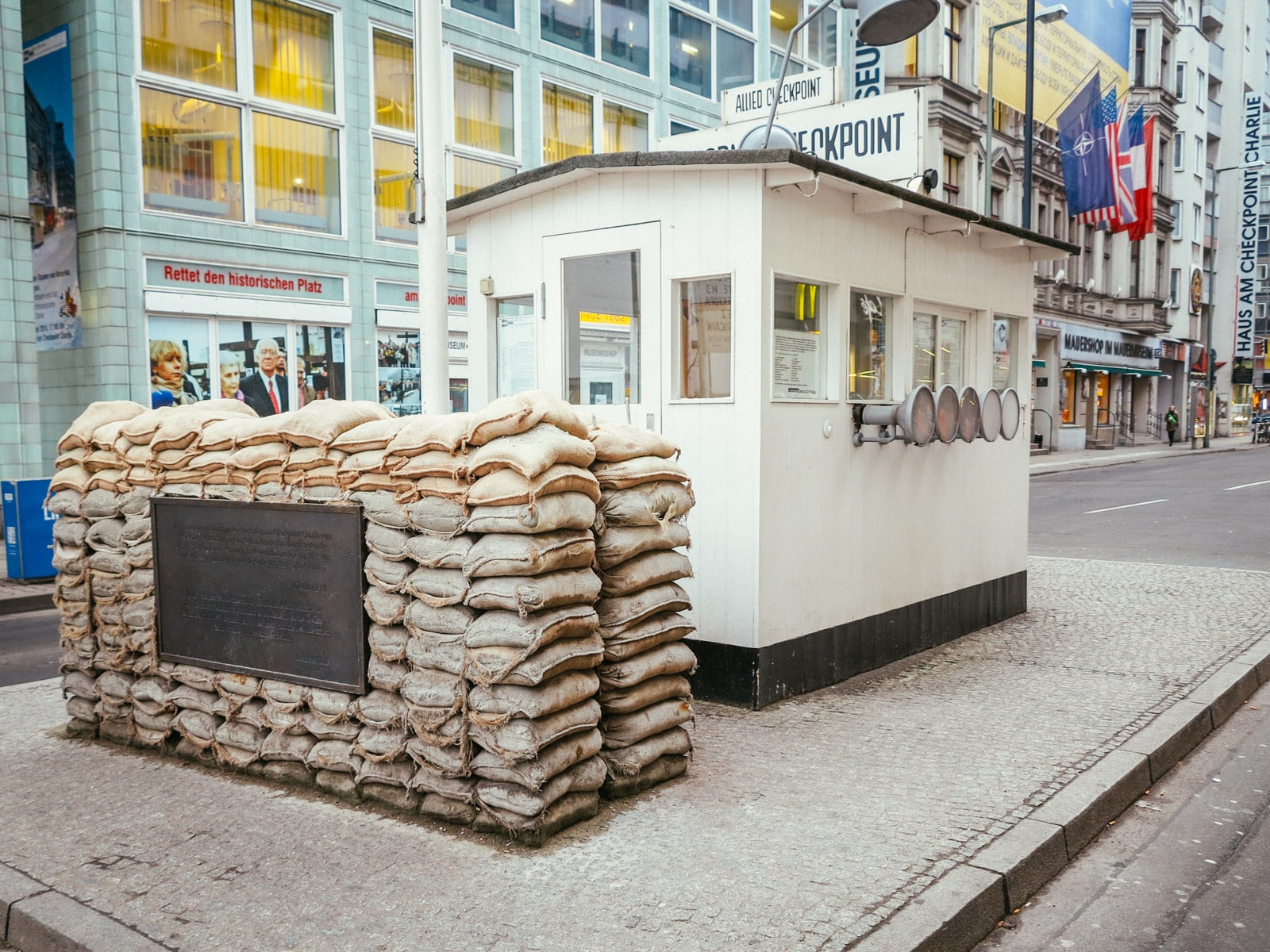
Cross The Cold War Border At Checkpoint Charlie
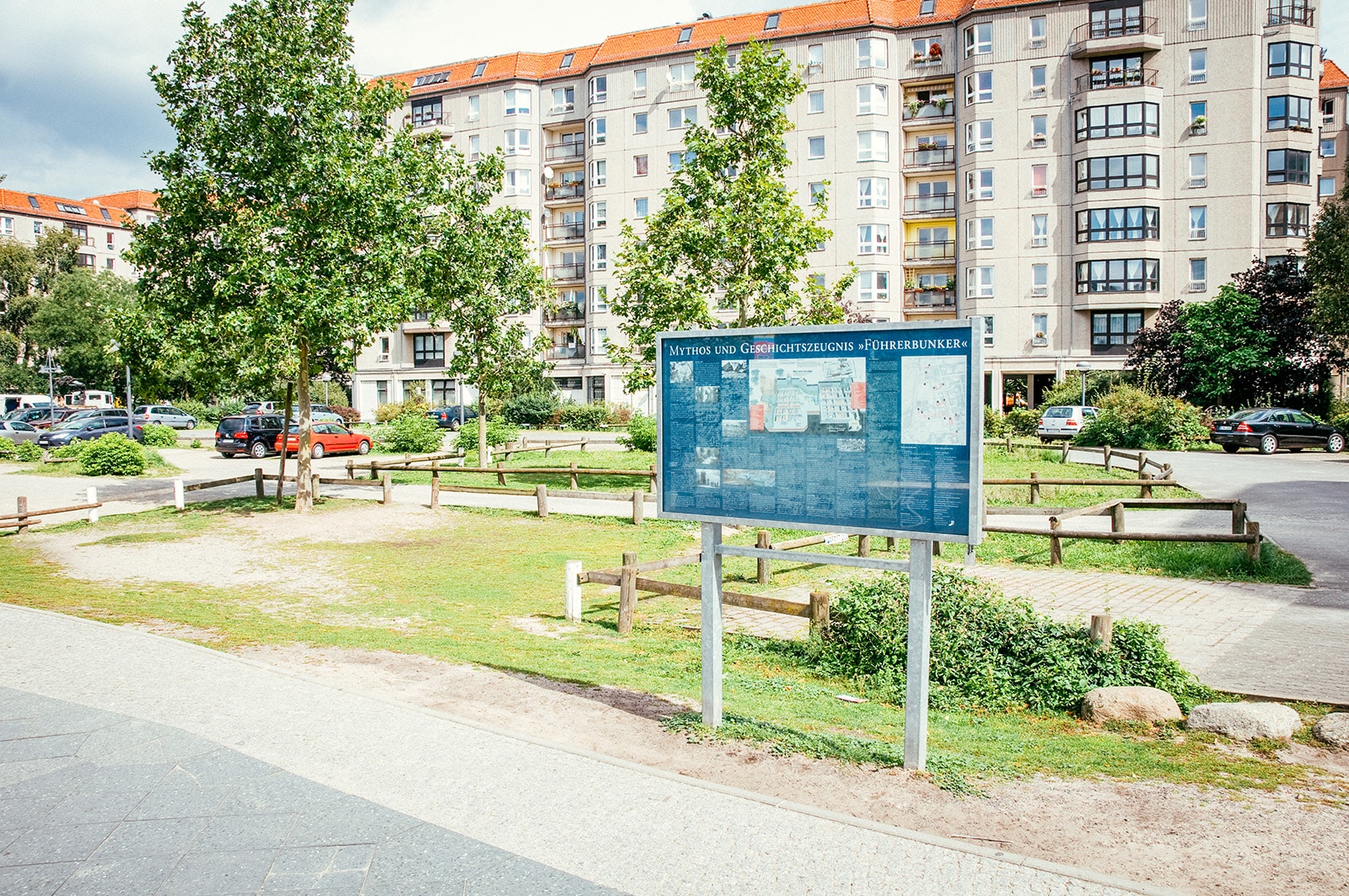
Visit The Site Of Adolf Hitler’s Führerbunker
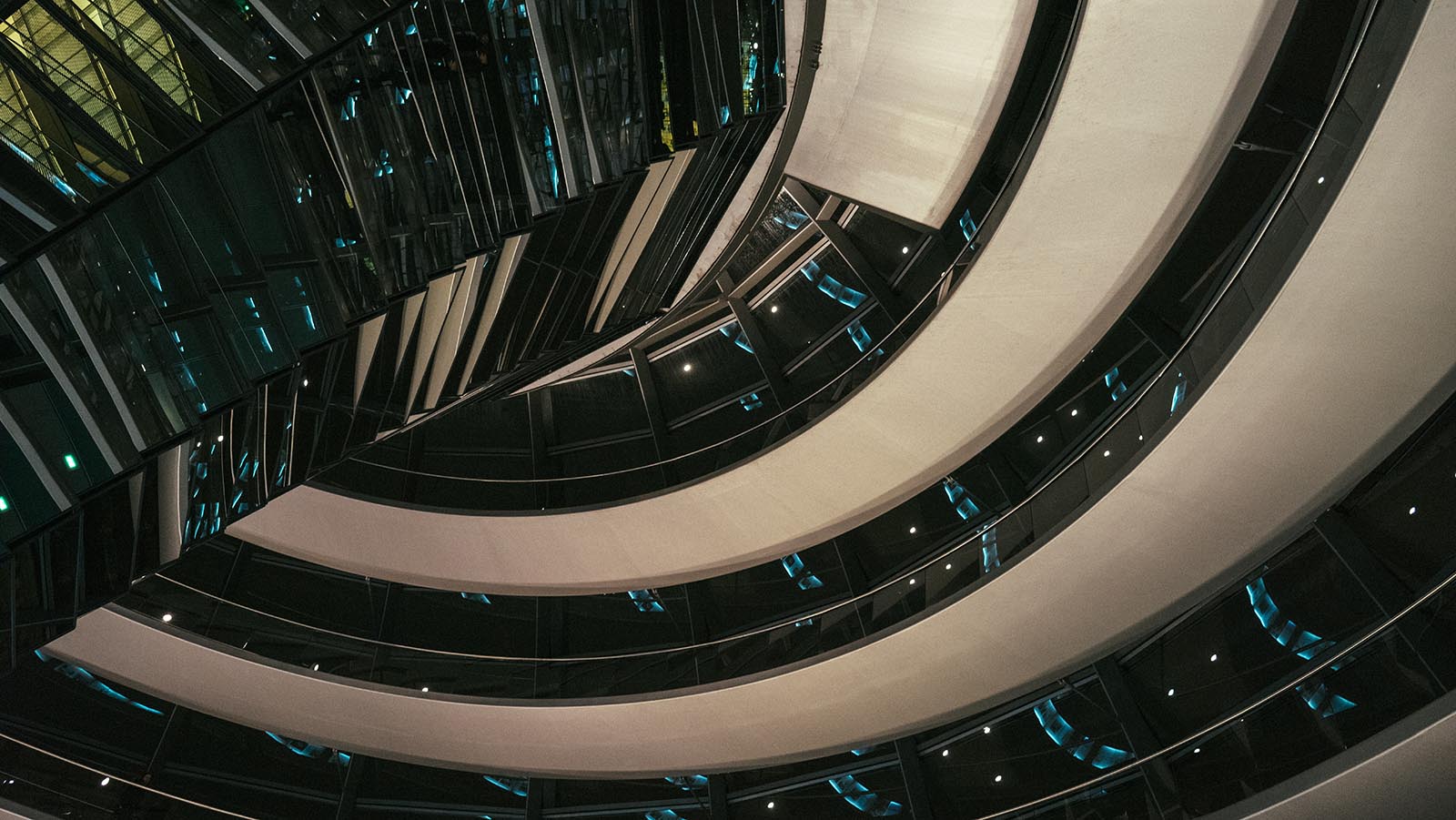
Visit The Reichstag Cupola At Night

Explore The Forum Fridericianum
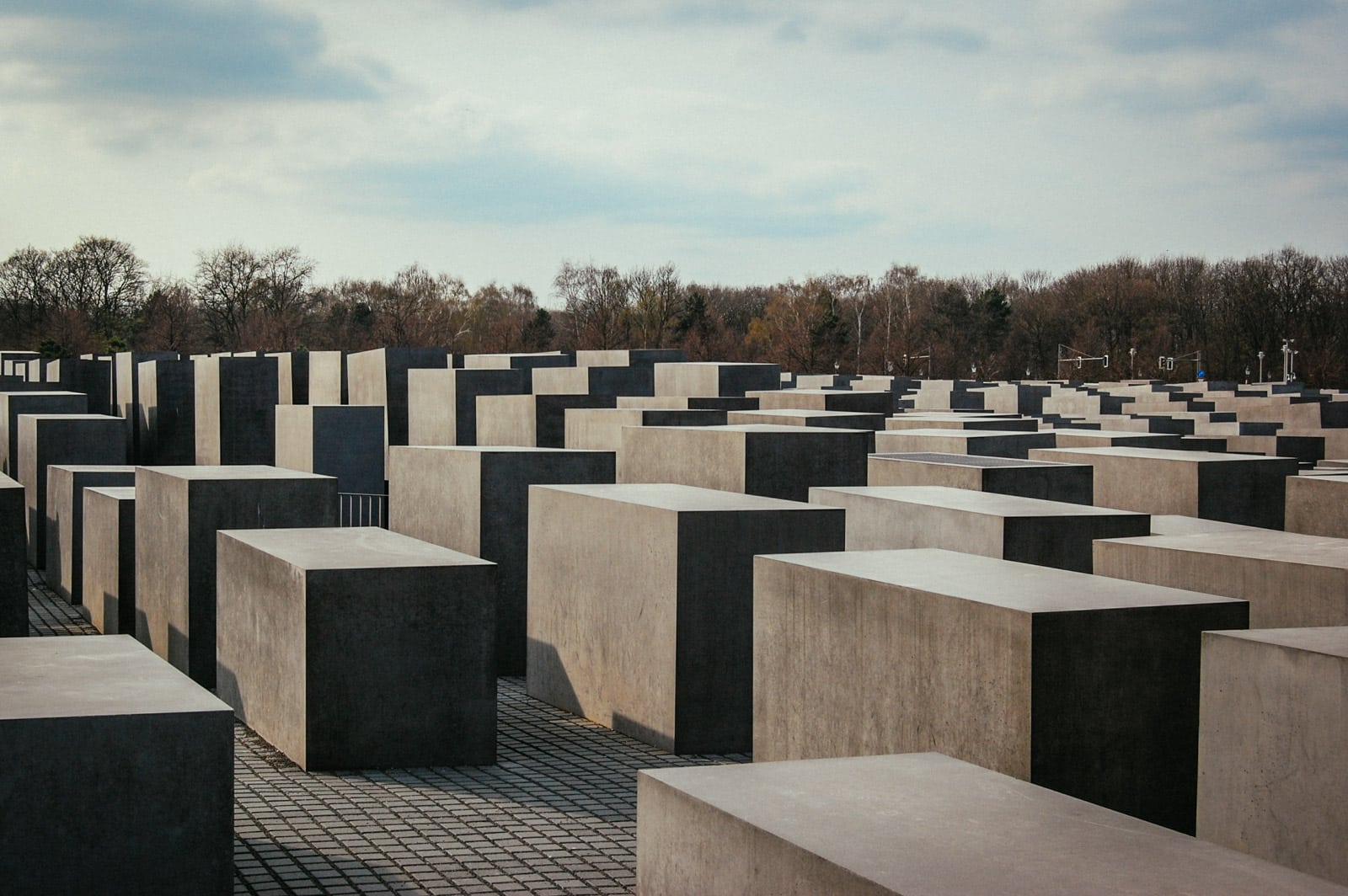
Journey Into The Memorial To The Murdered Jews Of Europe

Step Inside The Neue Wache
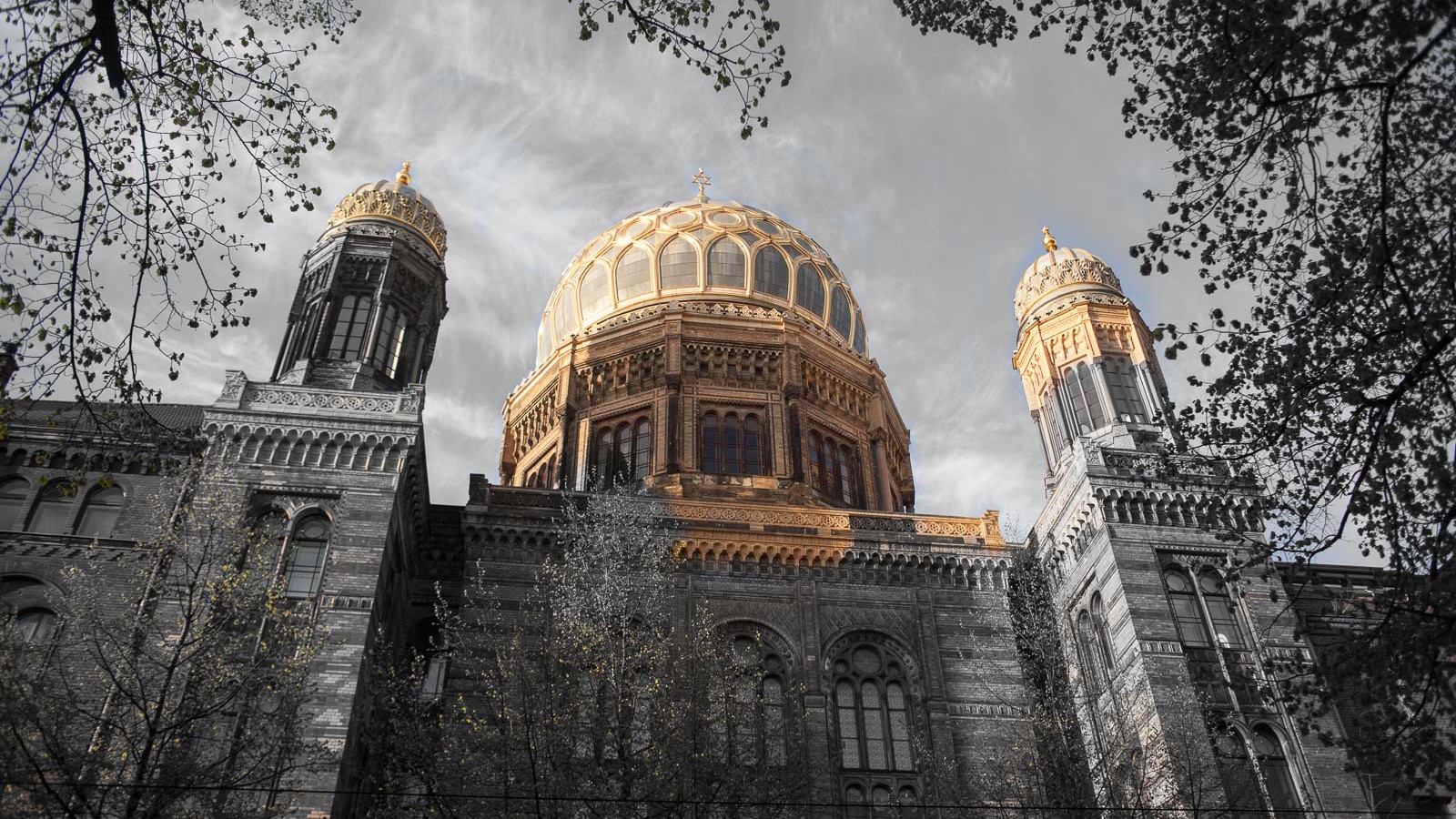
Explore The Former Jewish Quarter – Spandauer Vorstadt

Visit The Remains Of The Berlin Wall
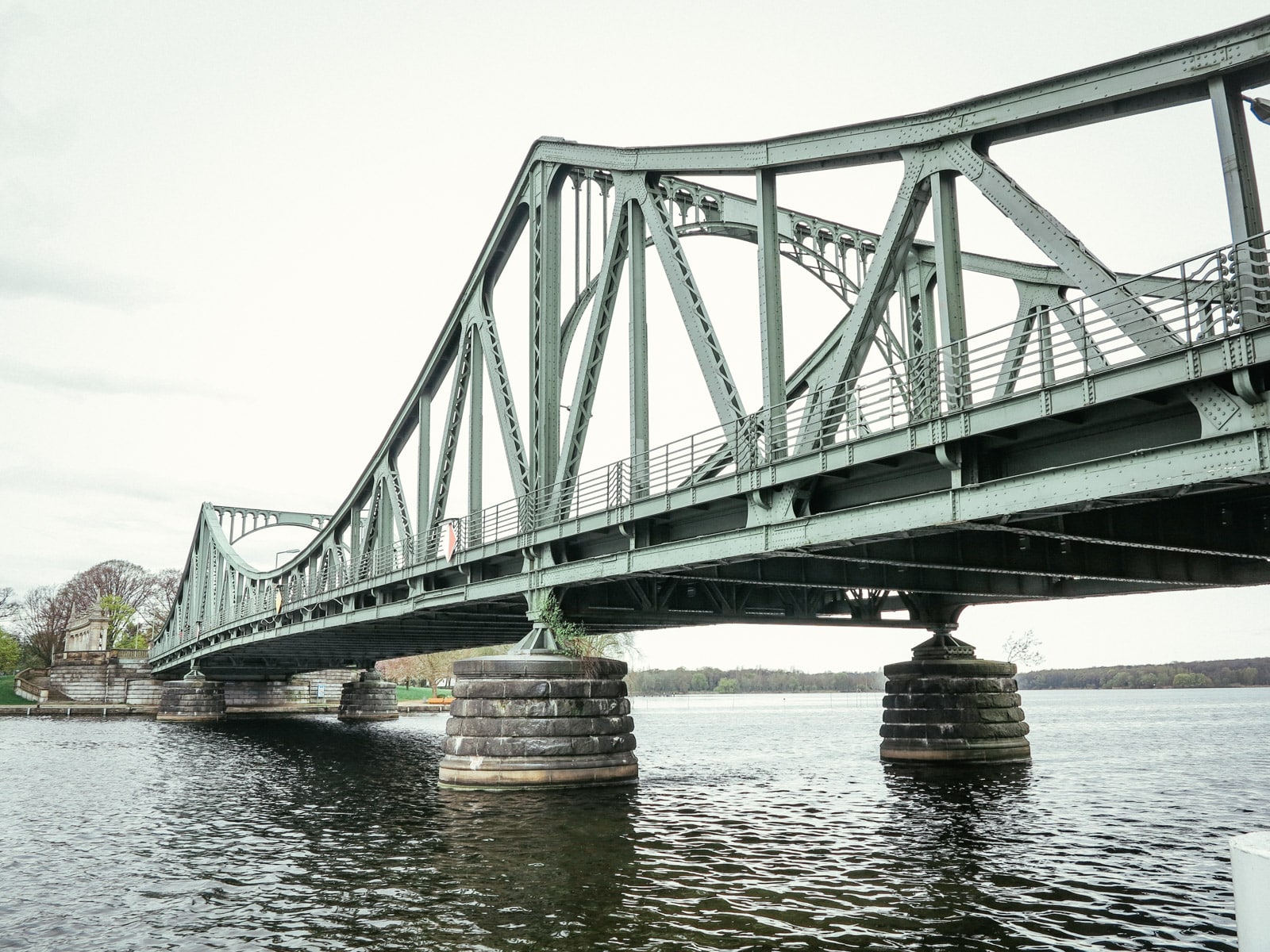
Walk Across The Bridge Of Spies

Explore The Topography Of Terror
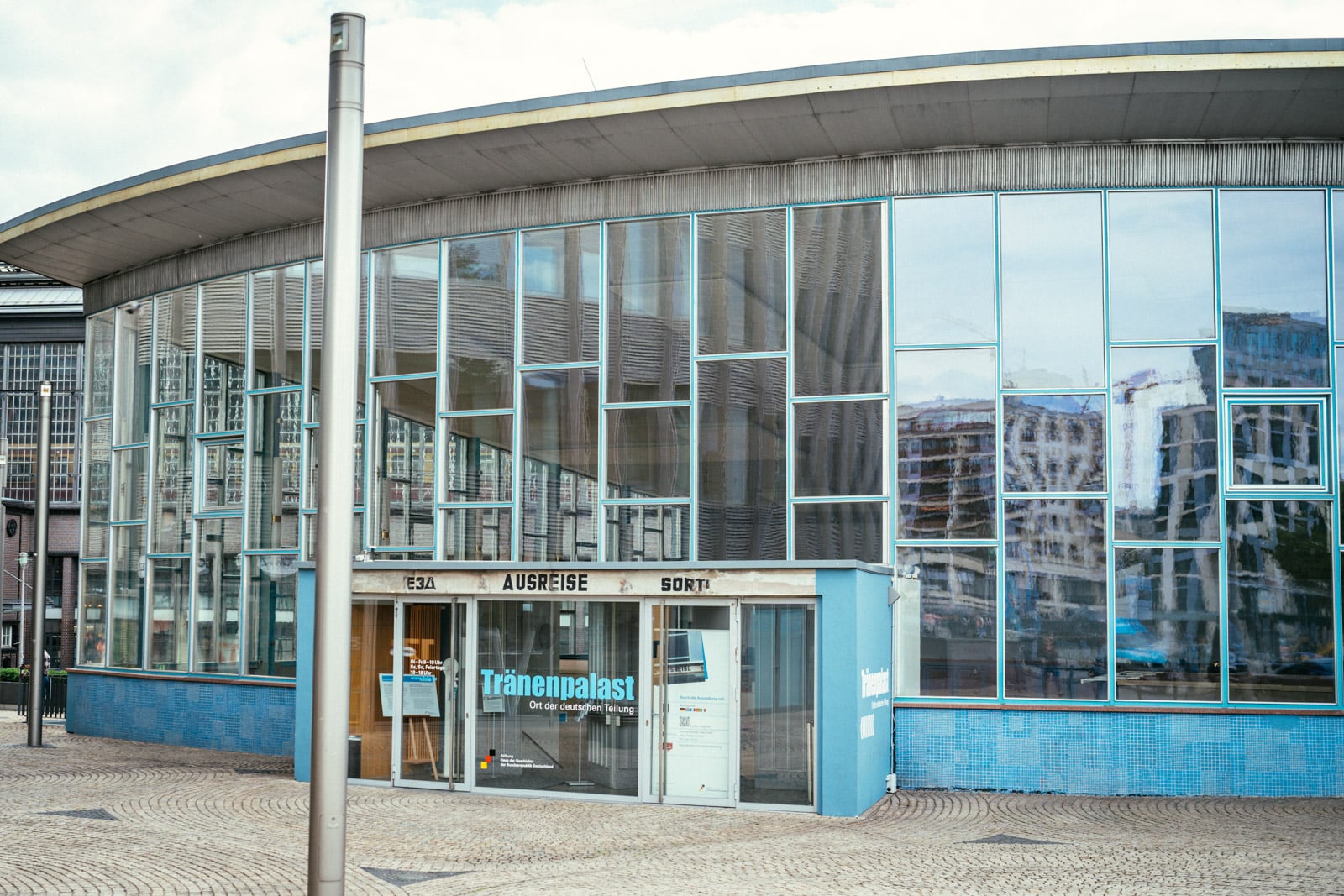
Enter The Palace Of Tears – The Tränenpalast
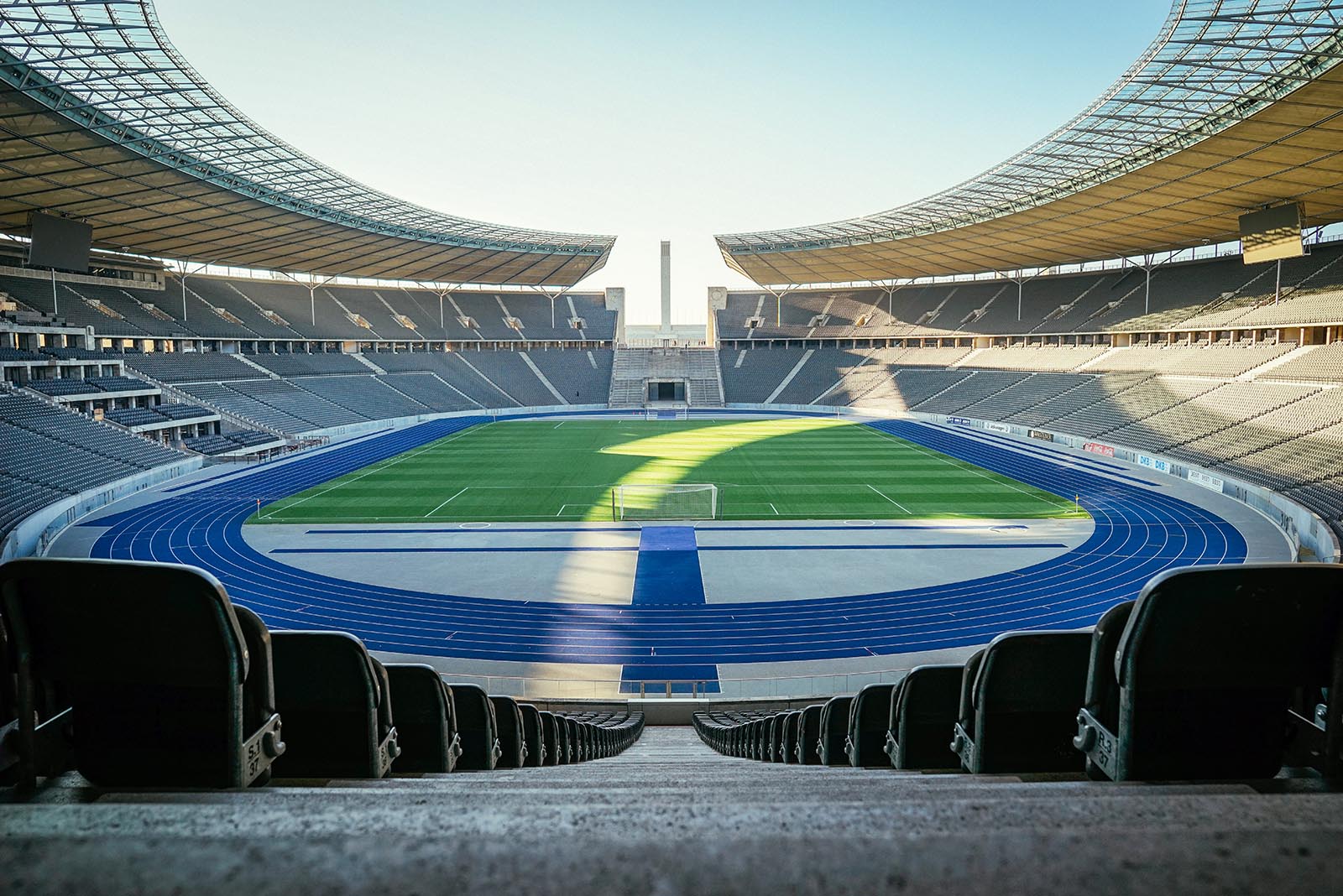
Step Inside The Berlin Olympic Stadium

Explore Erich Mielke’s Office At The Stasi Museum

Walk Along Karl Marx Allee
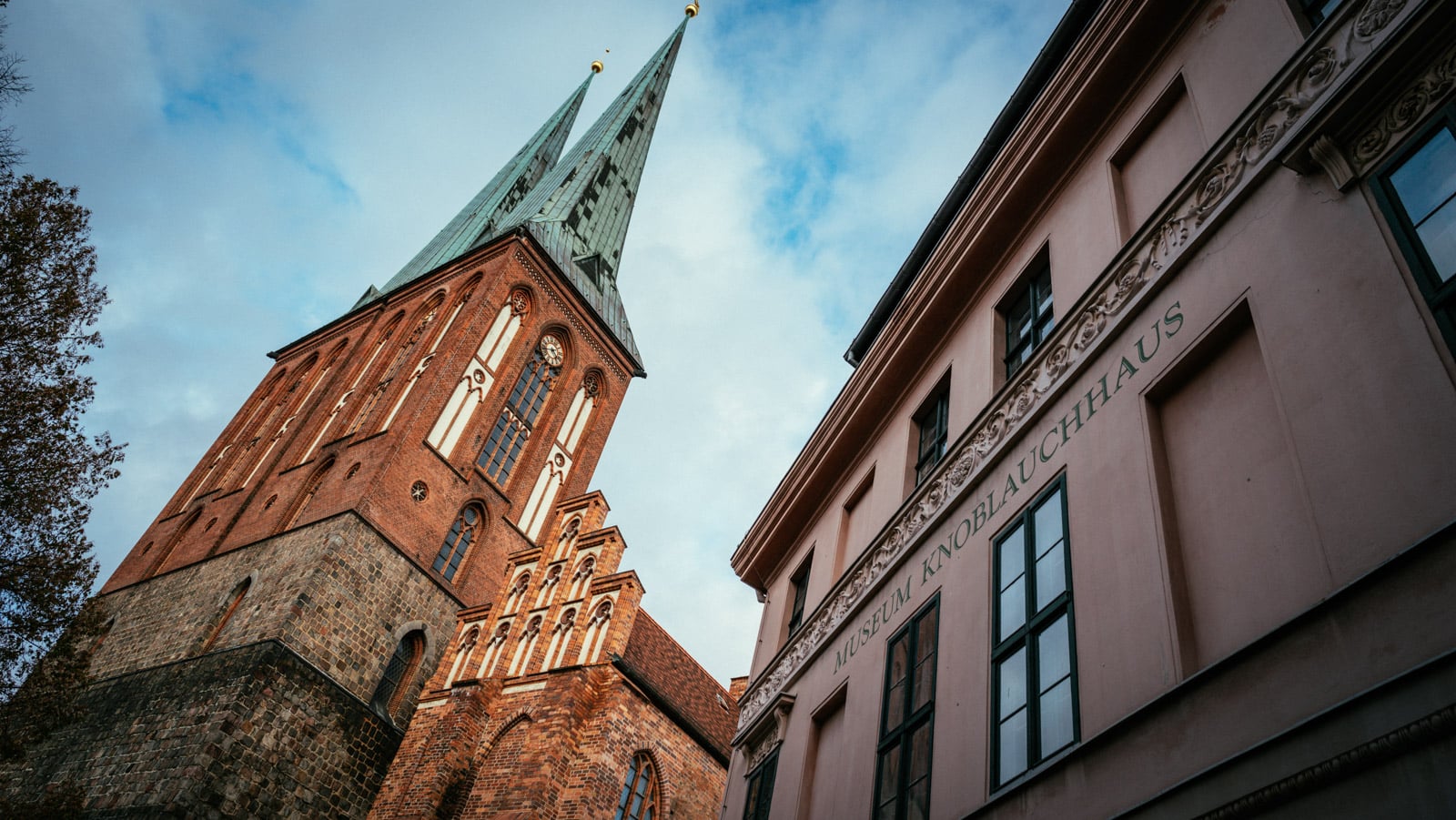
Visit The Oldest Church In Berlin – The Nikolaikirche
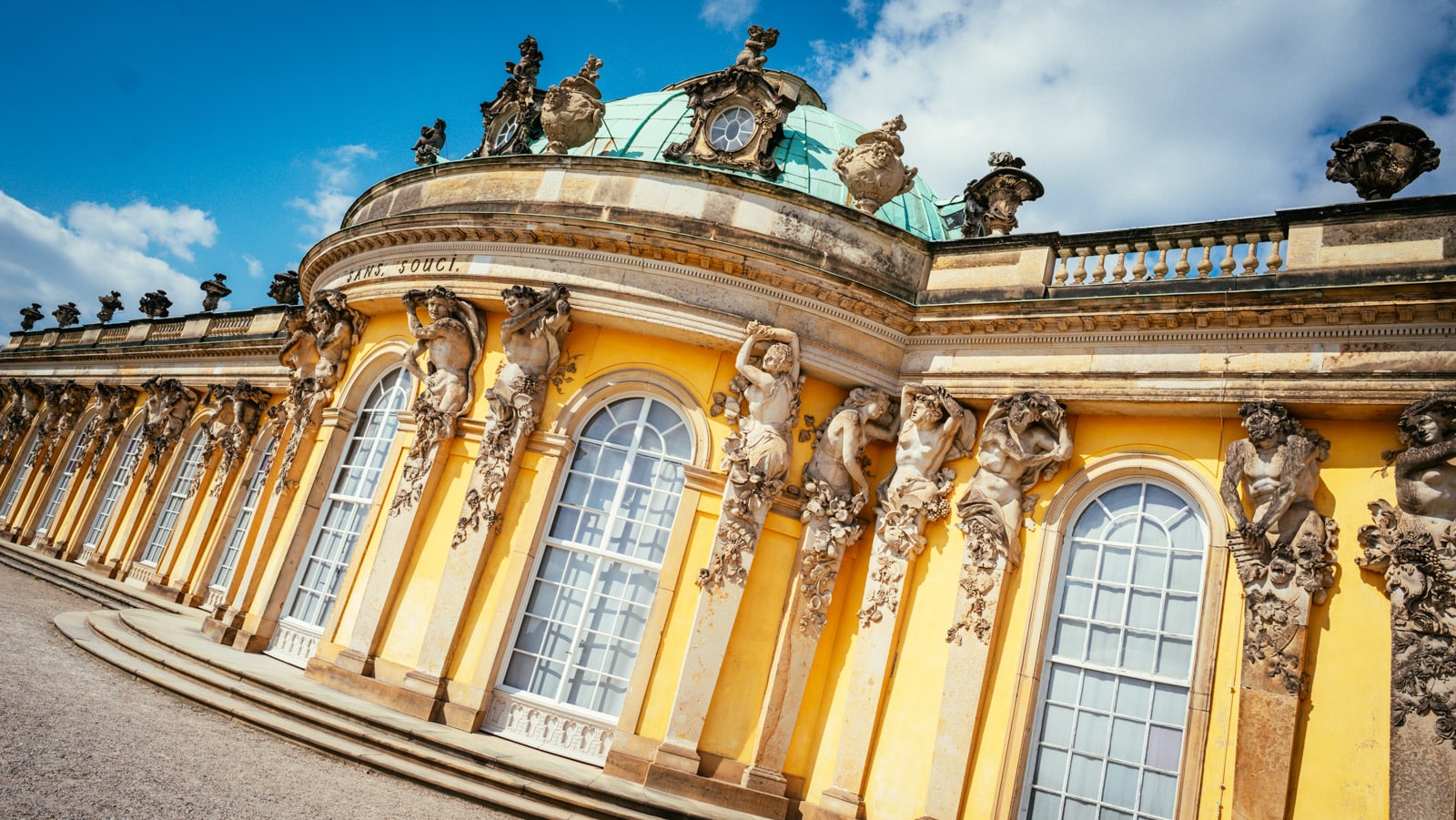
Visit The Grave Of Frederick The Great

Walk Through The Ruins Of Anhalter Bahnhof
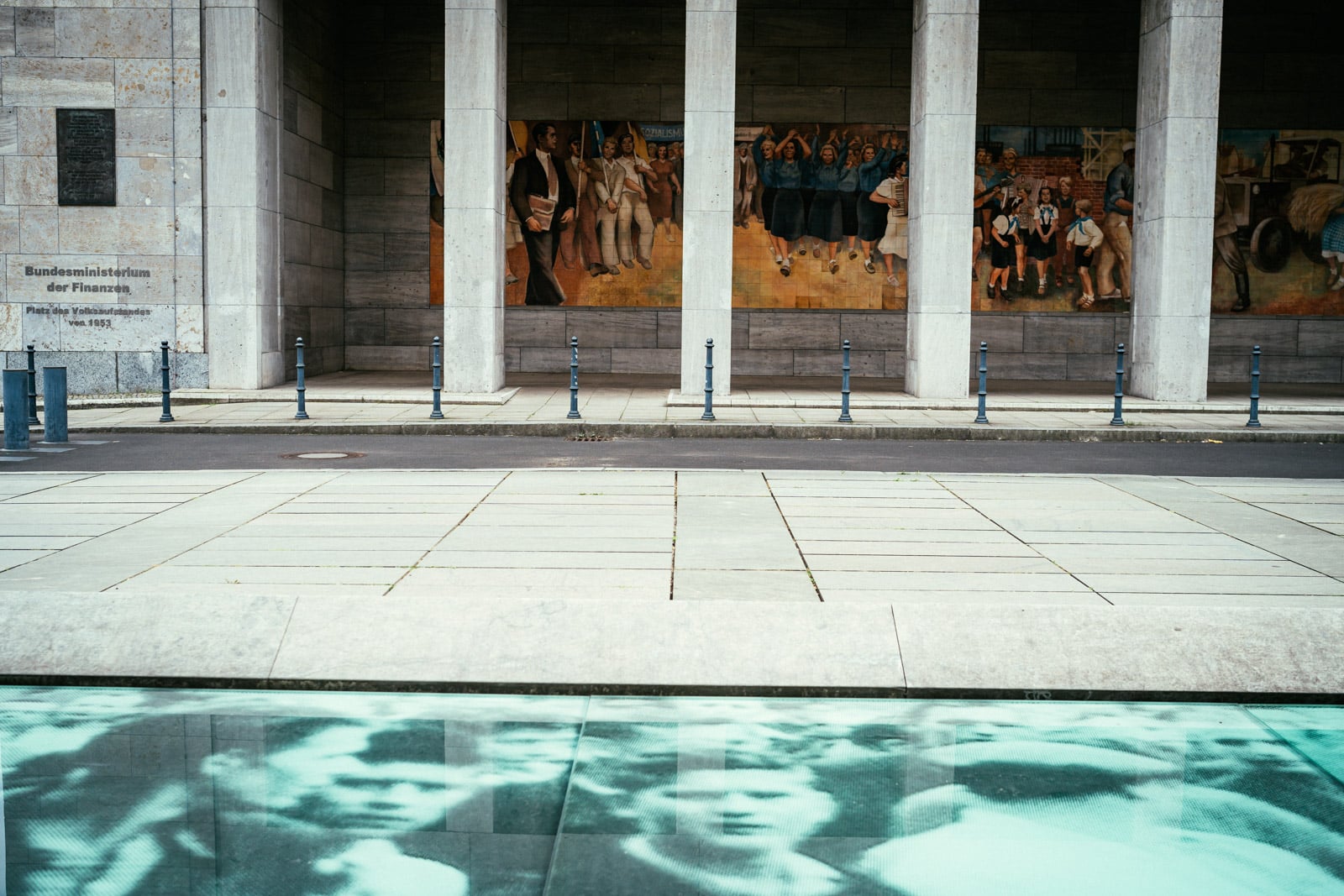
Stand On The Platz Des Volksaufstandes
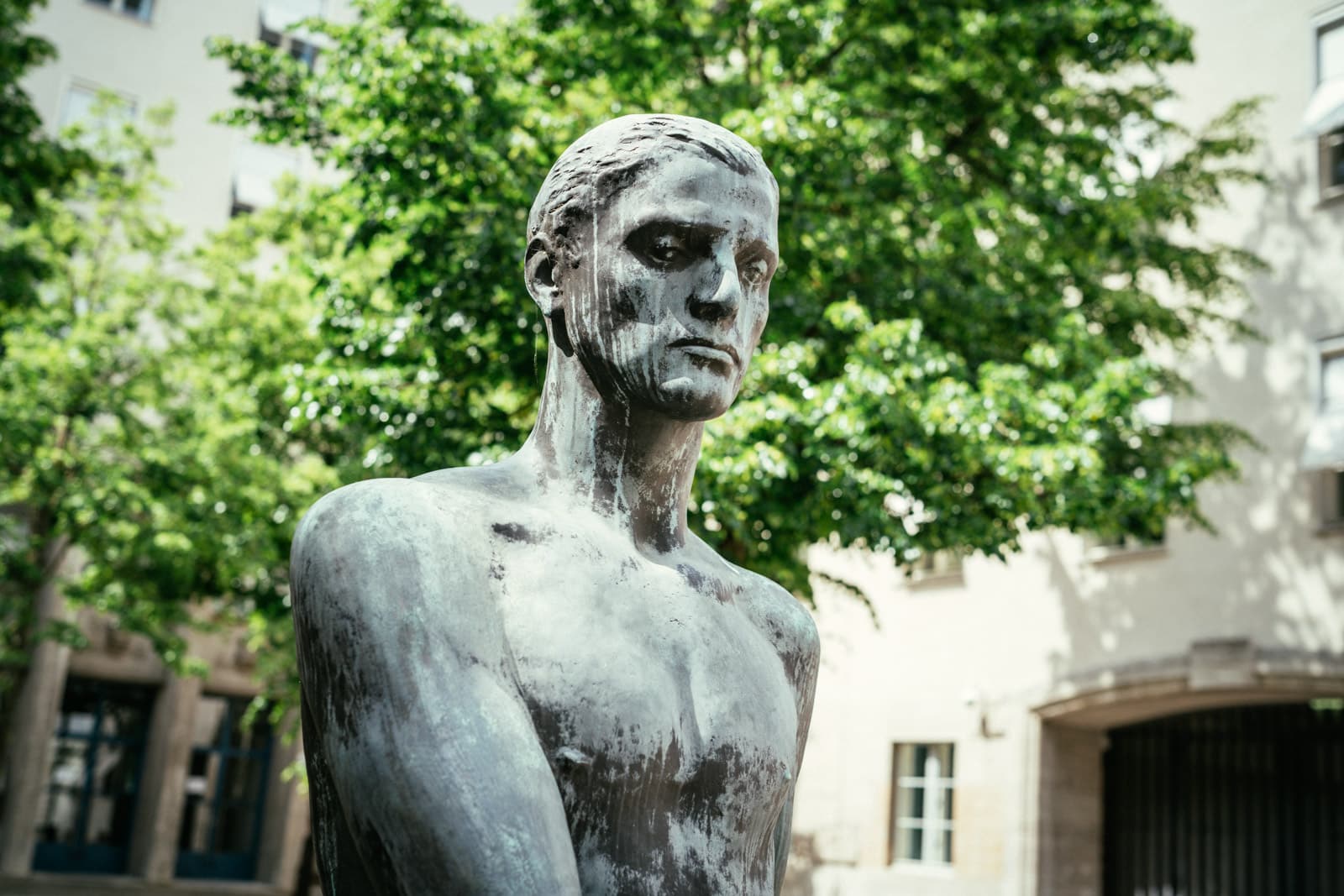
Visit The German Resistance Museum

Visit The Soviet War Memorial In The Tiergarten
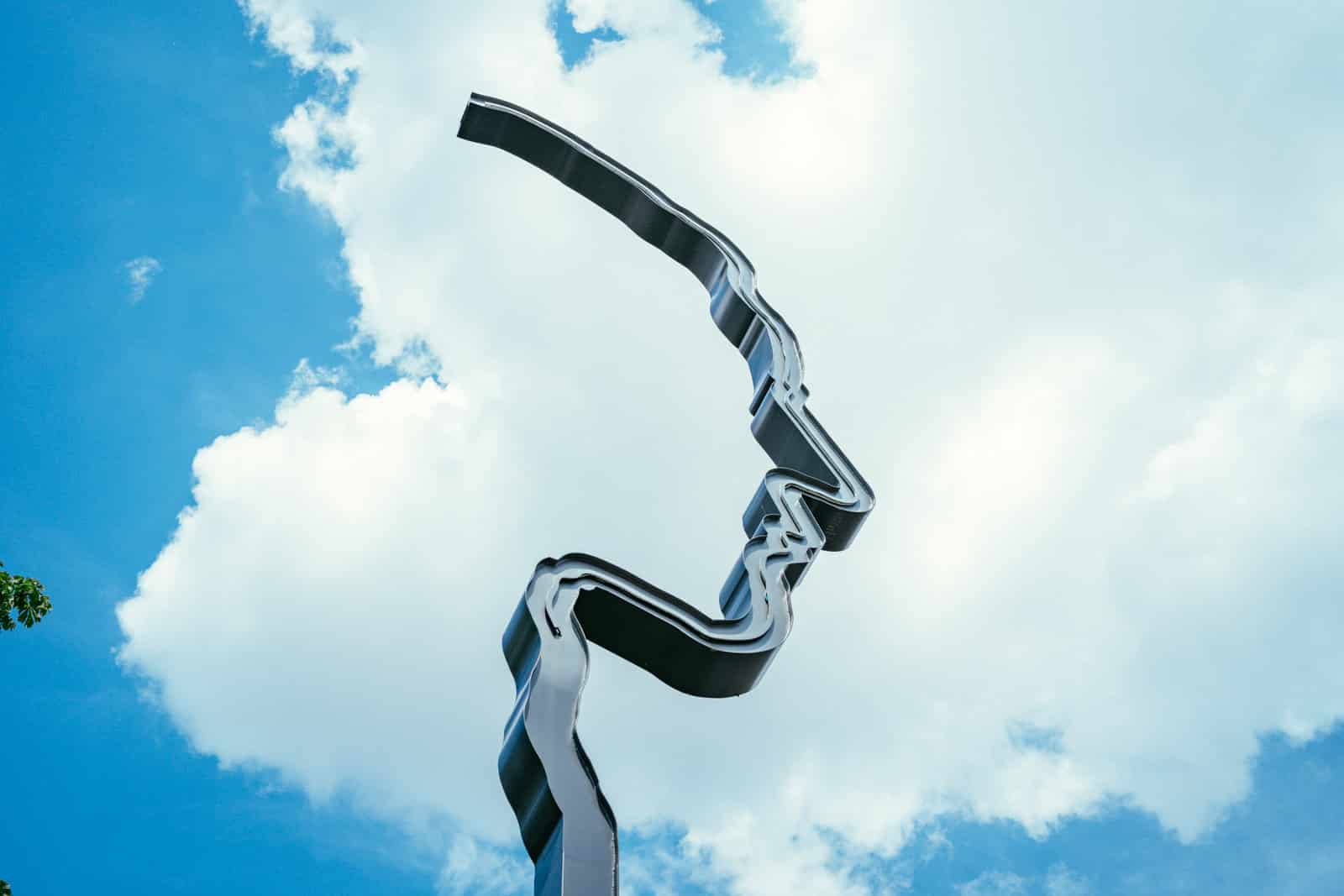
See The Georg Elser Memorial On Wilhelmstrasse
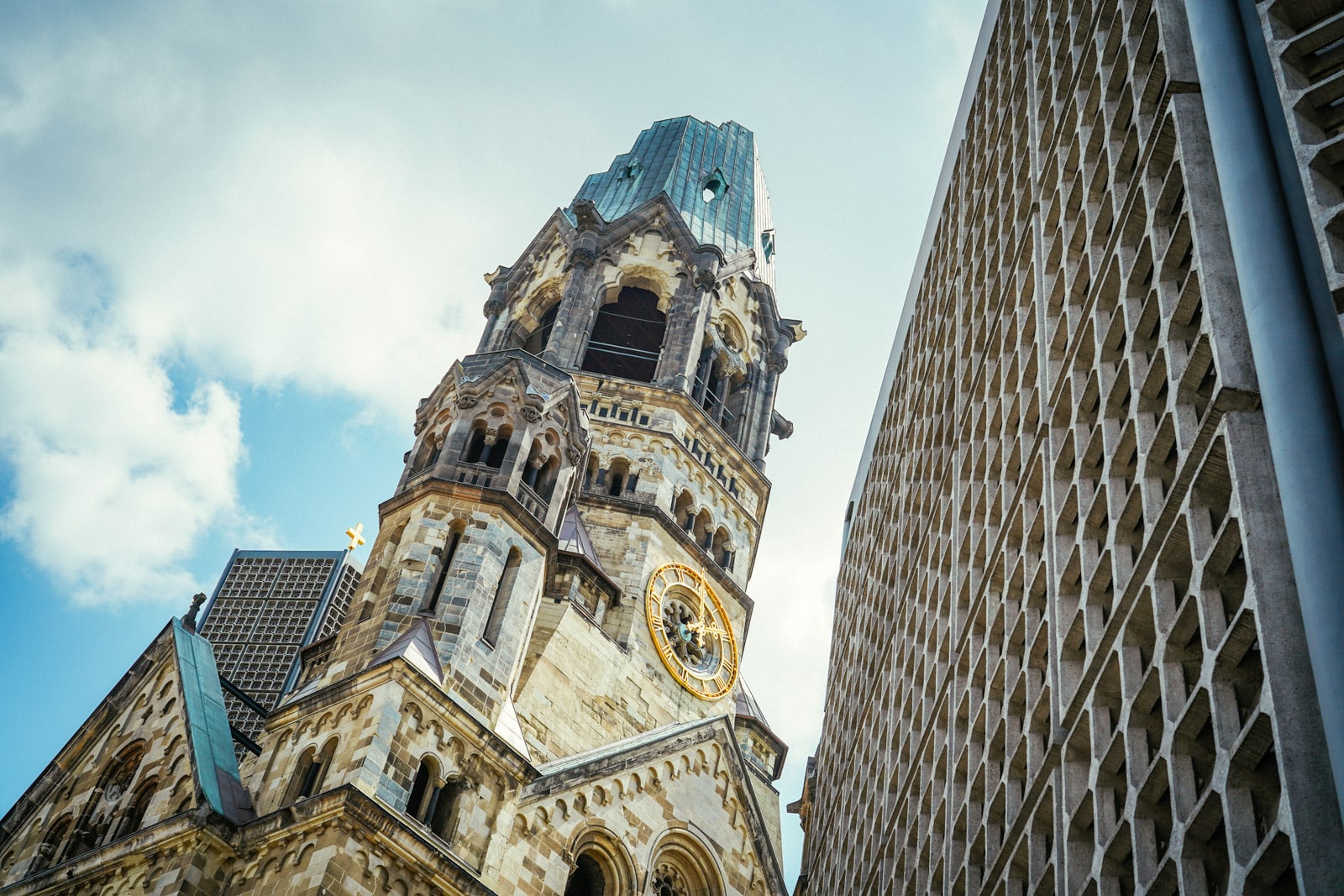
Step Inside The Kaiser Wilhelm Gedächtnis Kirche

Visit The Gleis 17 Memorial

Visit The Schloss Charlottenburg Mausoleum
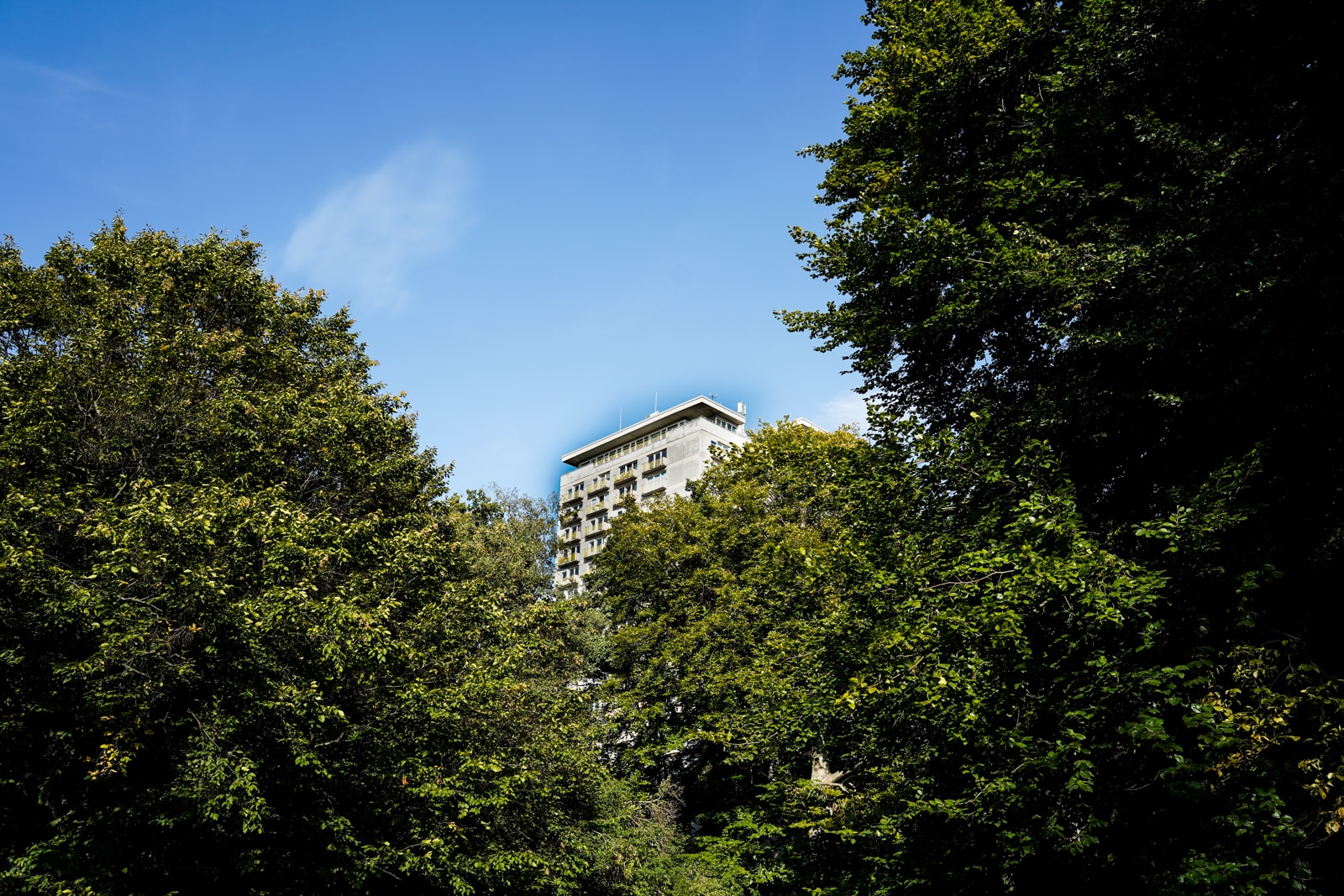
Explore The Interbau – IBA 57
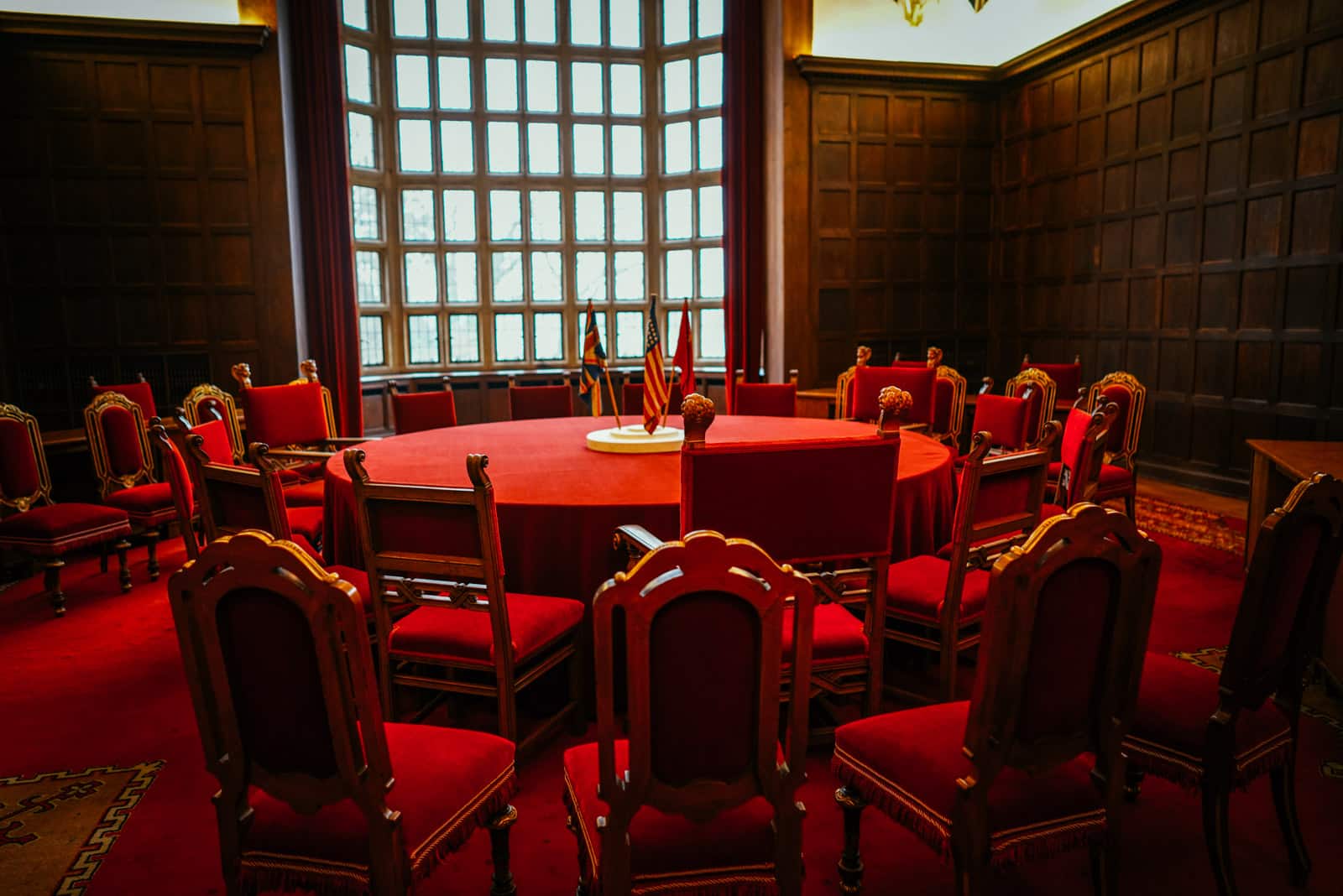
Visit Cecilienhof – Site Of The Potsdam Conference

Ride The Fastest Elevator In Europe

Visit The Soviet War Memorial In Treptower Park
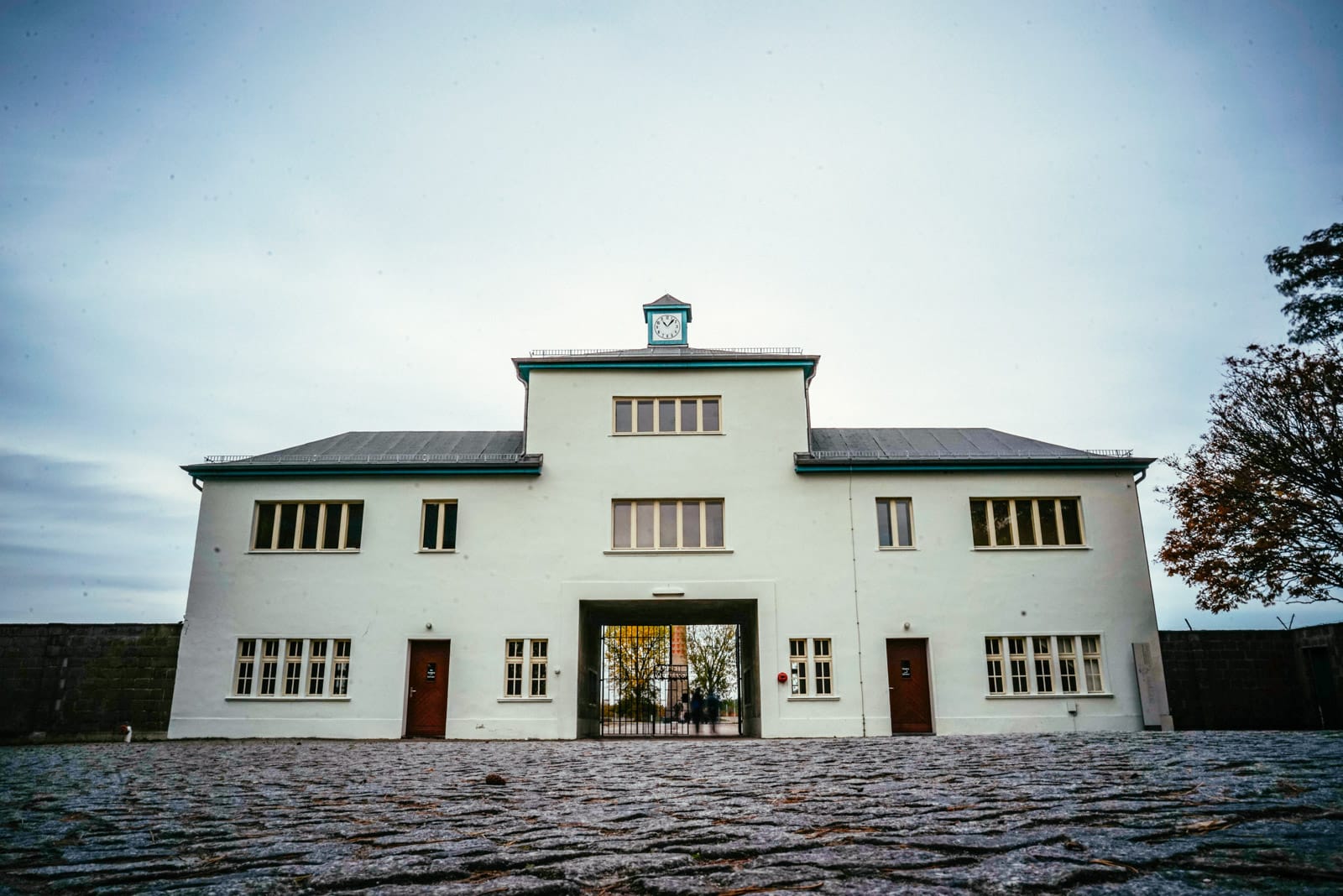
Visit The Sachsenhausen Concentration Camp Memorial

Visit The Ravensbrück Concentration Camp Memorial
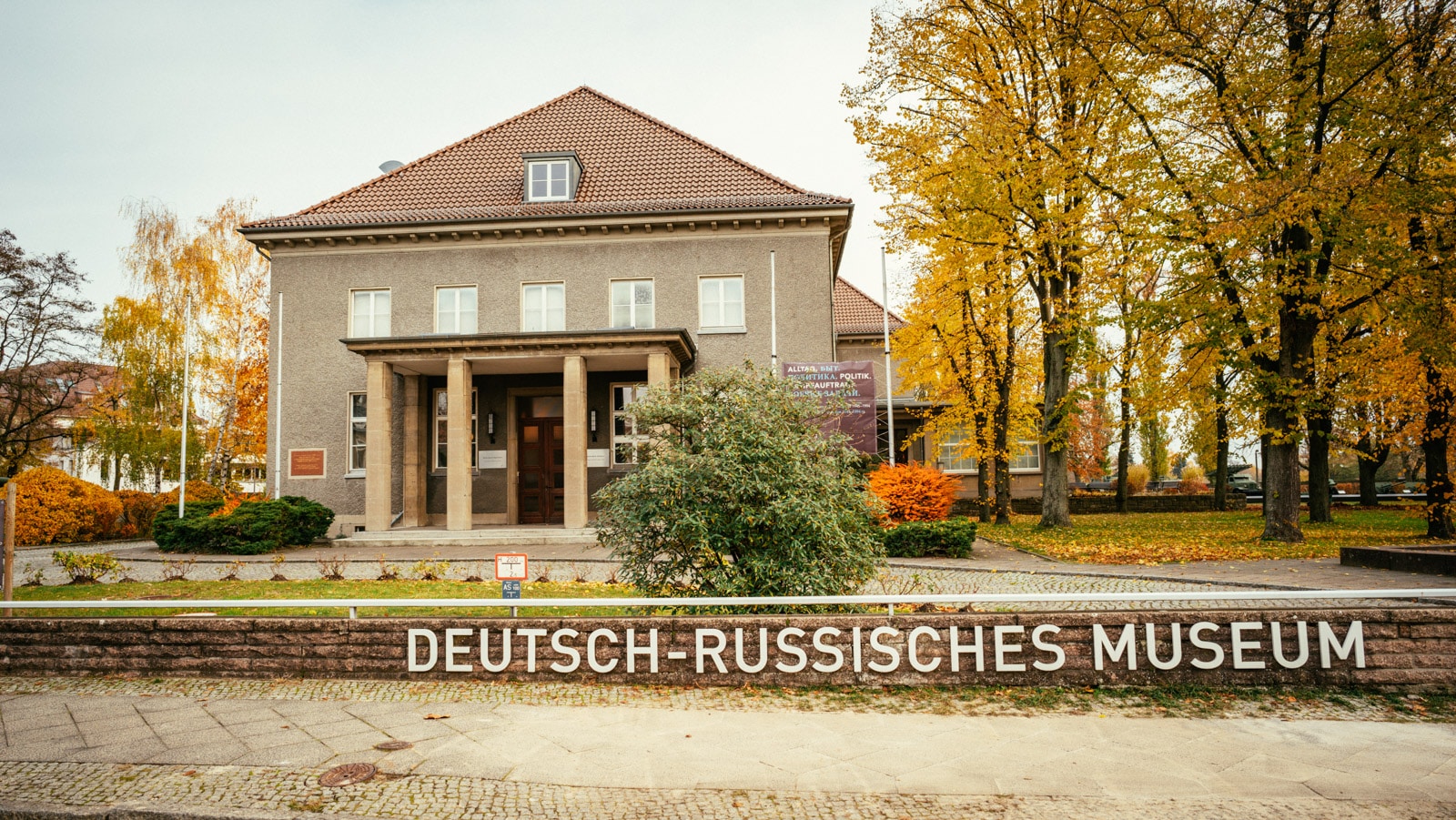
Visit Karlshorst – The Site Of The German Surrender
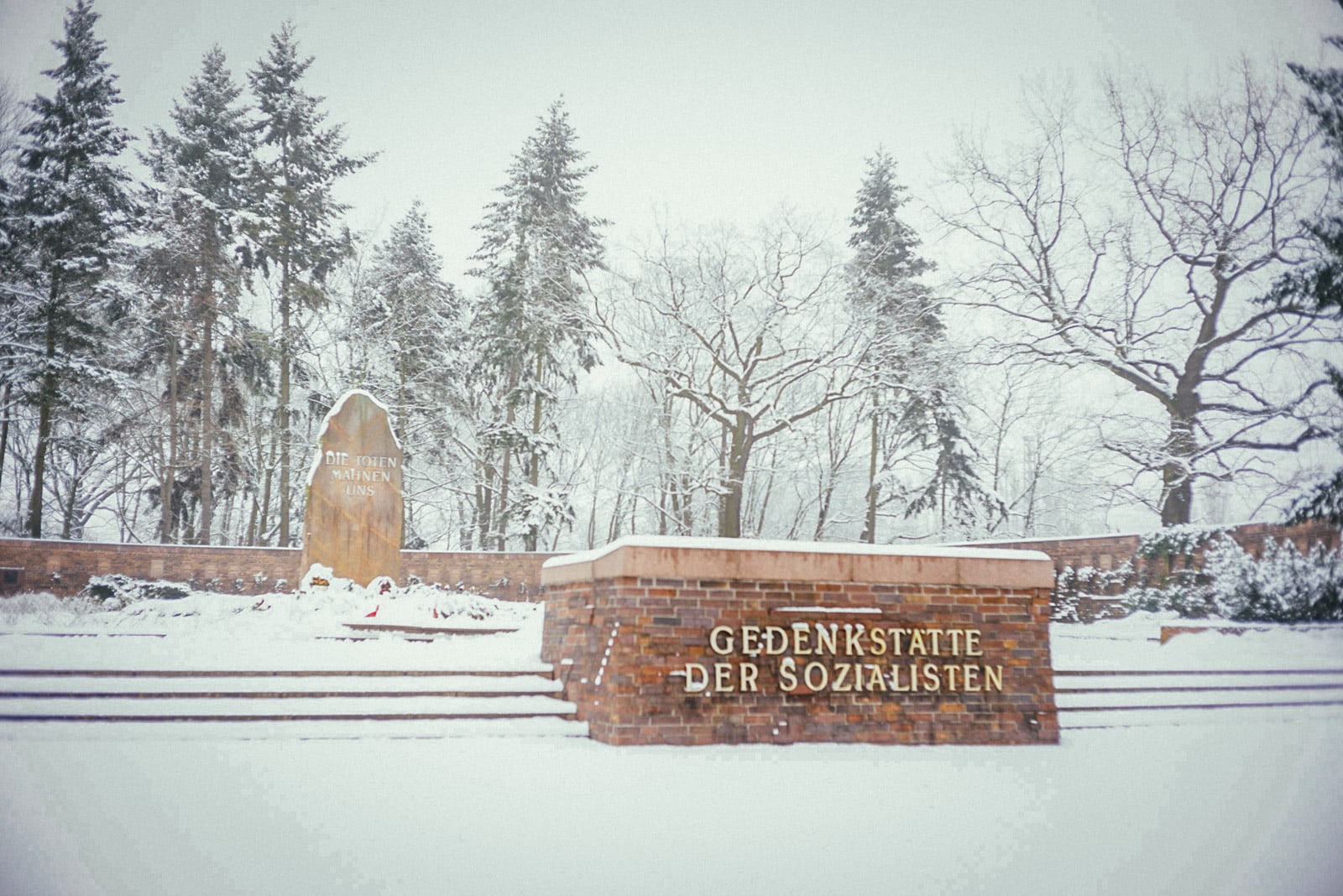
Visit The Socialists Cemetery – Zentralfriedhof Friedrichsfelde

Visit The Soviet War Memorial In Pankow

Visit the Seelow Heights Memorial
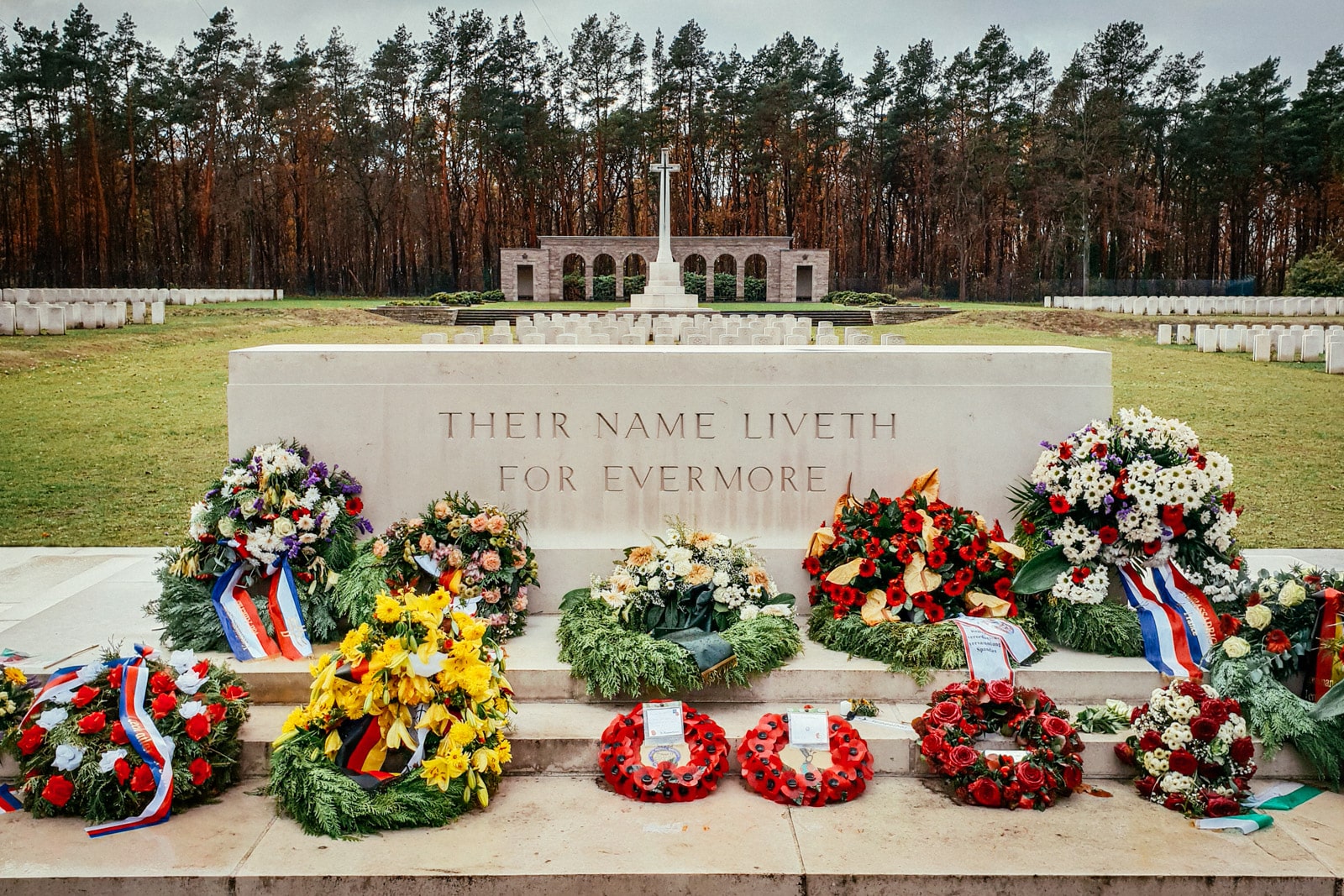
Visit The Commonwealth War Cemetery

Cross The Bösebrücke At Night
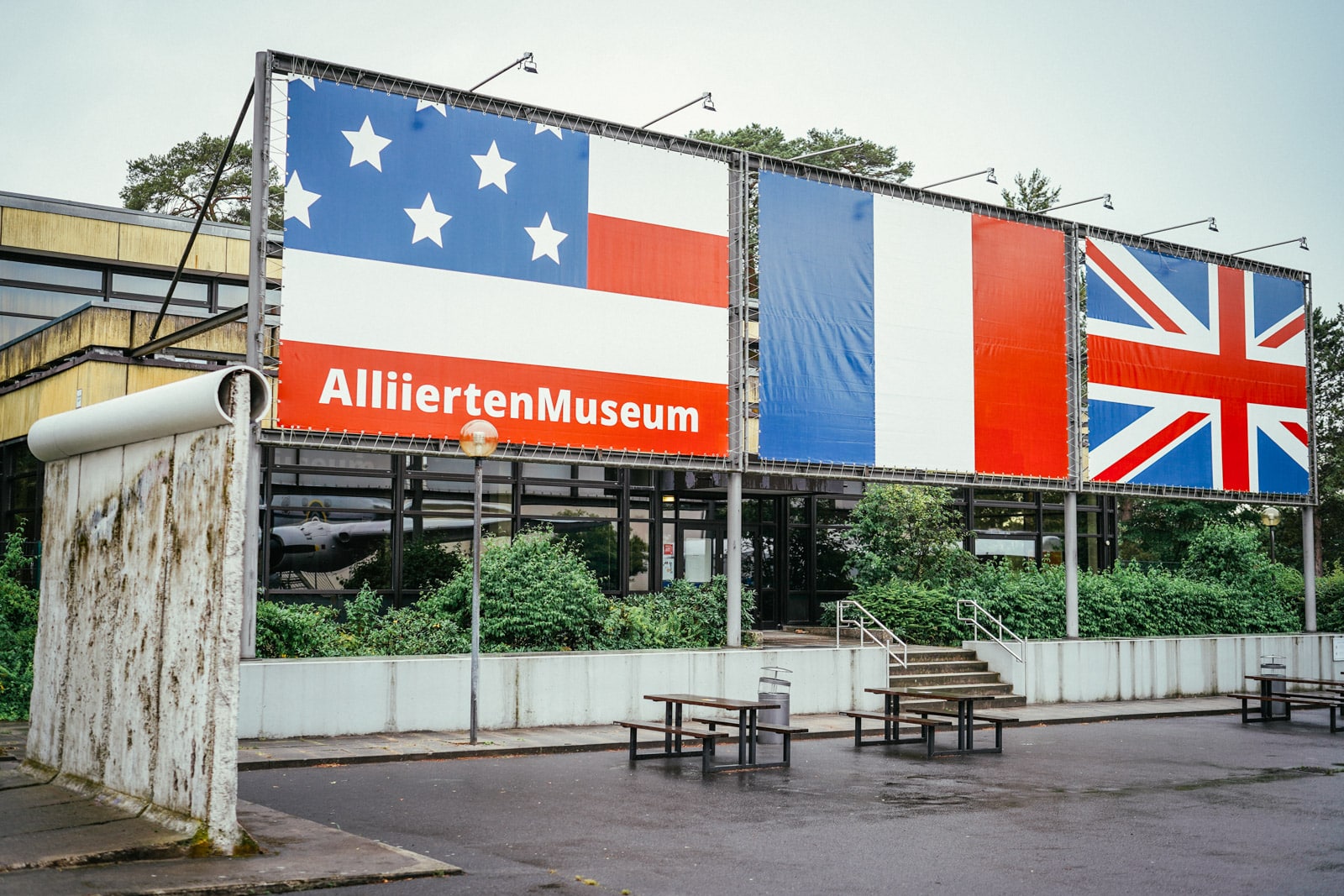
Explore The Allied Museum In Dahlem
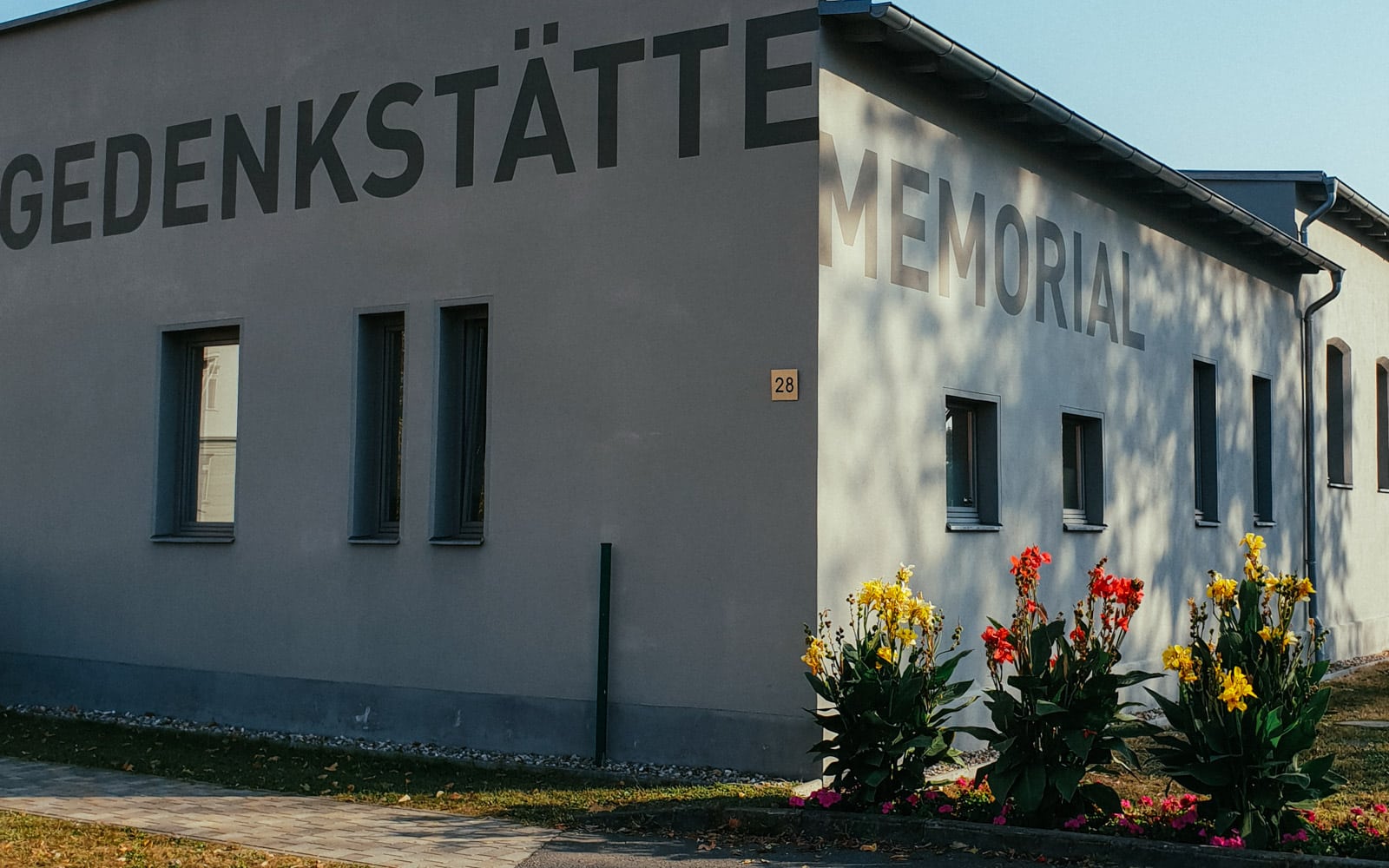
Visit The Brandenburg T4 Euthanasia Memorial
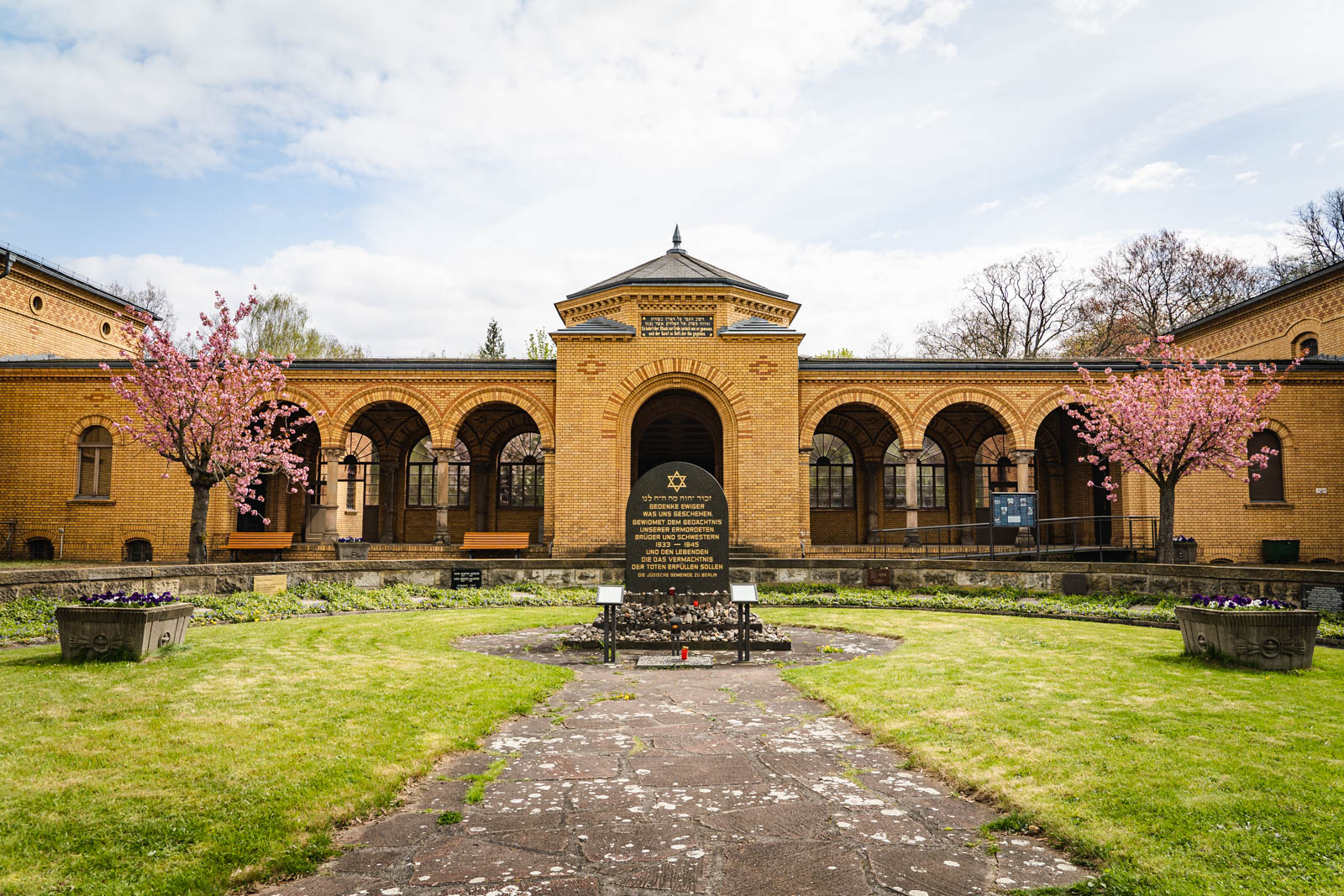
Visit The Jewish Cemetery In Weissensee
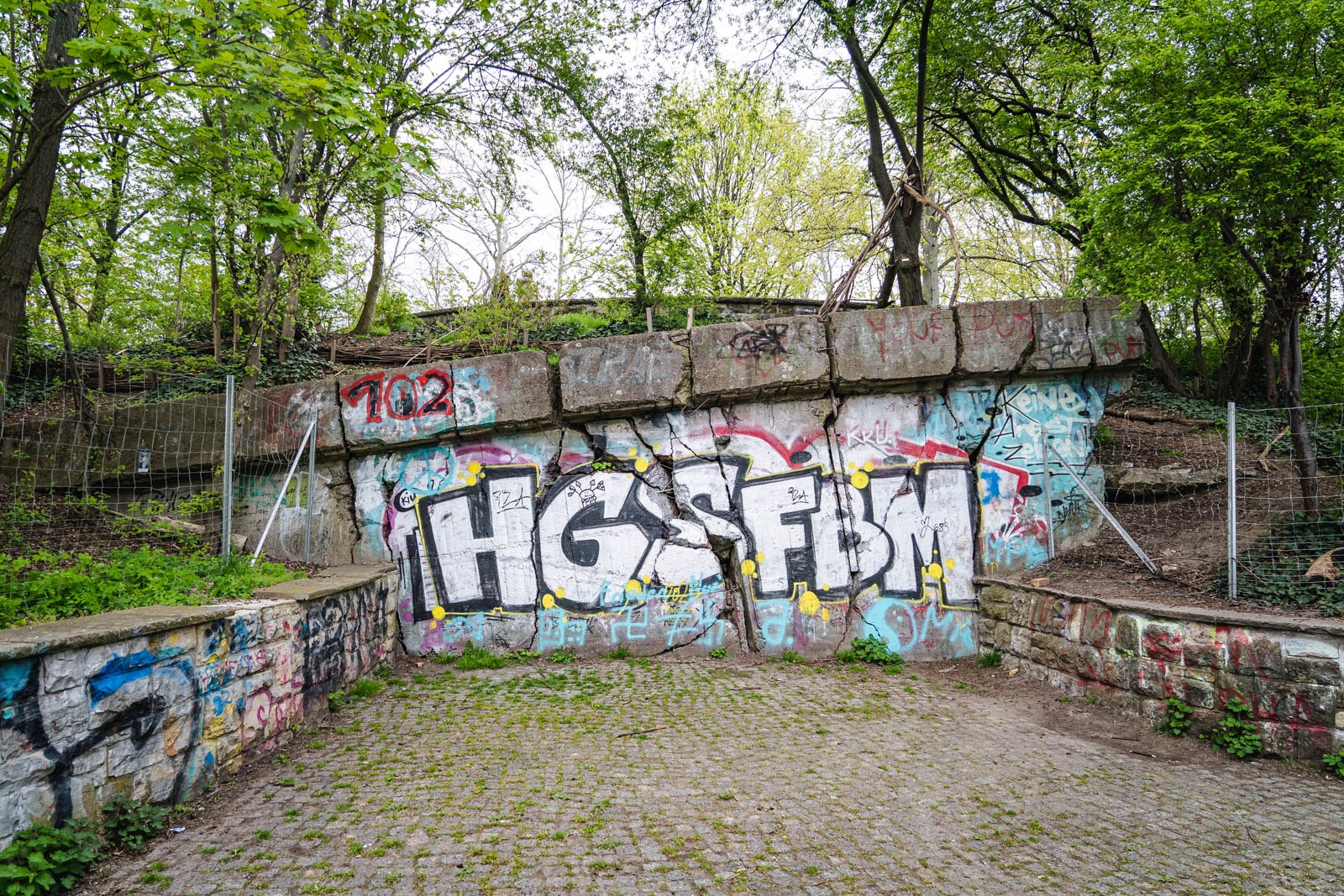
Explore The Volkspark Friedrichshain Flak Tower

Borders Of Adventure
Leading Culture and Adventure Travel Blog by Becki Enright. Looking at the world with a different angle to change perceptions of misunderstood places, for the best in travel.
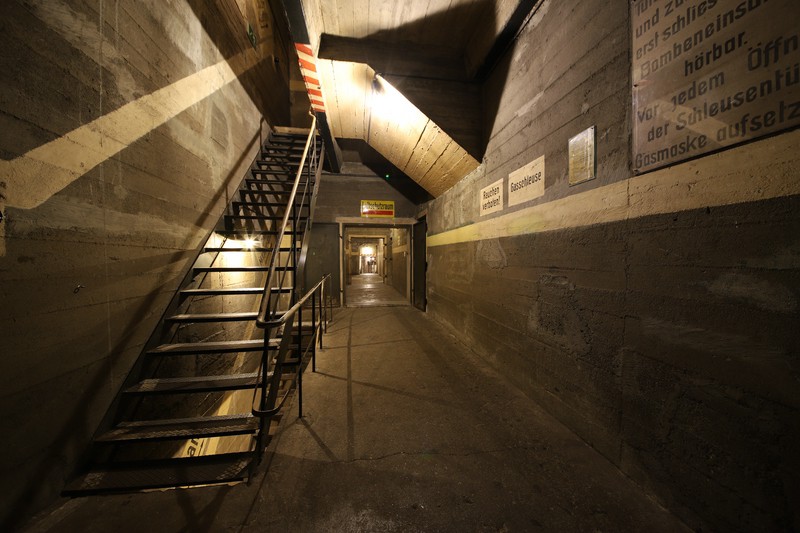
Germany , Misunderstood Destinations
Berlin Underground Tours – Secret City War Bunkers and Escape Tunnels
Disclaimer: This post contains affiliate links to handpicked partners, including tours, gear and booking sites. If you click through or buy something via one of them, I may receive a small commission. This is at no extra cost to you and allows this site to keep running.
Berlin underground tours are an alternative way to understand the city’s complex history, where you can view war bunkers and escape tunnels in what are now disused metro stations.
With Berlin known for its alternative scene and unravelling of a dark past, this is a different way of seeing it.
When researching my trip there I came across the Berlin Underworlds Association (Berliner Unterwelten) – a society for the exploration and documentation of subterranean culture. They provide expert tours of the city’s underground linked to various moments of its history, citing to “experience the history of Berlin from an unconventional perspective.”
The Berlin Underworlds Association has been offering Berlin tunnel tours for around 15 years, so they know exactly what they are doing when it comes to the important underground structures in the city. You won’t get stuck or lost, or be breaking any laws when it comes to the exploration of abandoned areas. This has all been curated and set up exclusively.

© Berliner Unterwelten e.V. / Holger Happel
Where Does the Berlin Underground Tour Begin?
When do the underground tours run, underground tours prices, escaping via the sewage system, escaping via the east berlin u-bahn underground stations, from underground to overground , berlin underground bunker tours, virtual tours of underground berlin, beneath berlin – understanding history , what berlin underground tours can you go on.
From war bunkers and air-raid shelters to the remains of an anti-aircraft fortress, subterranean Berlin plays host to a wealth of history. You might find it hard to choose which tour to go on, although a lot of your choice will be dependent on what tours are running on the given day.
There are currently four underground Berlin tours available:
- Tour 1: Dark Worlds
- Tour 2: From Flak Towers to Mountains of Debris
- Tour 3: Cold War Nuclear Bunkers
- Tour M: Under the Berlin Wall
I decided on Tour M, which at the time was called Breaching the Berlin Wall: Subterranean Escapes from East Berlin to West Berlin and which this article focuses on, with an overview of the main things you get to learn about and what an underground tour encompasses generally.
Photography is not allowed, which is why I am using images granted for use by the Berliner Unterwelten.
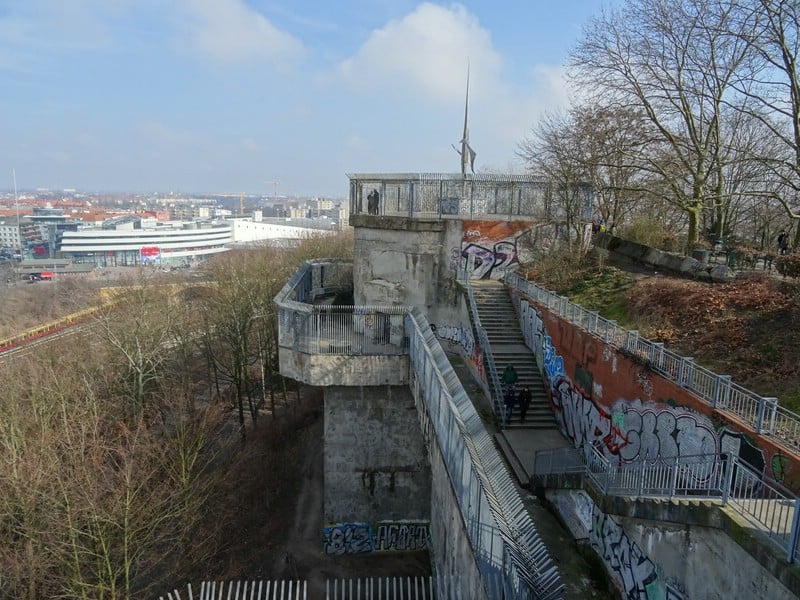
The majority of the tours start in or near the Gesundbrunnen station in the north of Berlin city centre and they last approximately two hours.
The main season for tours is April – October and they run from Monday – Friday between 10 AM – 4 PM and on Saturday, Sunday and National Holidays between 9 AM and 4 PM.
You can check the website for further details and view the calendar of dates and times on the homepage .
Surprisingly, the tours to this secret part of Berlin are relatively inexpensive.
– Tour 1, 2 and 3 are €15
– Tour M is €18
– The Exhibition, “Myth of Germania” is €6
Do note: The BerlinWelcomeCard is not valid for the tours but for the exhibition “Myth of Germania”.
The Berlin Wall Escape Tunnels
Many attempts were made to escape from East Berlin to the West via man-made tunnels dug deep underground, where everything from reinforcements to lighting and ventilation had to be taken into consideration.
The first tunnel was dug in December 1961 and the last one in 1985, four years before the borders were opened. Of course, some attempts had devastating consequences, when uncovered by the East German secret police (Stasi), but others were successful. The determination resulting in the same people risking their lives to dig another tunnel in a different location months later to help others.
The sewer channels were also used as escape routes, even though the Stasi had put preventative measures in place with grating systems. Initially, the grating was a square shape within the circle of the tunnel meaning there was just enough space to squeeze under – through the sewage.
The Stasi later installed oval-shaped grating and then used measures to cover the space completely. Many West Berlin students had great escape operations in place using the sewage systems to help their friends trapped in the East.
However, when escaping this way, someone had to be the ‘lid man’ with the promise of being able to go down into the hole another time. In the room underground was a manhole cover, the same as the ones you see in the city today and what would have been in use back then. The lights were turned out as if to create the atmosphere of nighttime escape and two strong guys were asked to carefully and quietly lift the heavy lid.
No problem at all, but putting it back? A disastrous mixture of the wrong balance, uneven weight and constant clanging noise. Back then, they would have been caught instantly and killed. It puts into perspective how difficult these escapes were with the Stasi on the lookout right around every corner.
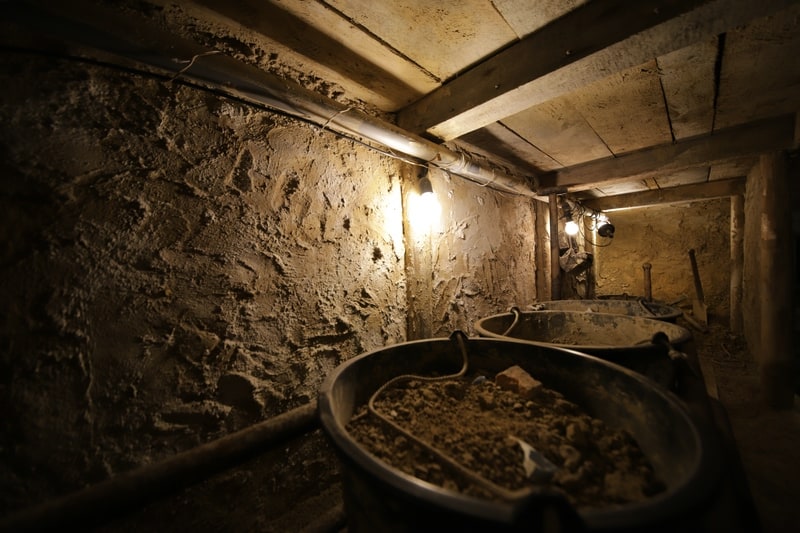
With the construction of the Wall, U-Bahn lines in East Berlin were severed in their connection to the West. But as the East got poorer the two West Berlin lines (the U6 and U8) that ran through East Berlin were ‘rented out’ to the West, allowing them to pass through the East Berlin metro stations without stopping.
We were told about how people cleverly hid among the tracks and side walls ready to jump on passing trains and how the guards on the Eastern side would defect and while on duty, use this route as a means to escape.
When the Stasi lost too many men they eventually locked guards on duty in a room with a small window looking out towards the tracks. Any signs of escapees would have to be called through to a superior, by which point it was probably too late to catch them.
One of the most fascinating parts of the tour was wandering along a huge underground corridor only to emerge from a side door on the wall of the underground station, which most people probably walk past daily and don’t give a second’s thought as to what lays beneath.
From there you are taken via the metro to my much recommended Berlin Wall viewing site, Bernauer Strasse, where more than seven escape tunnels were attempted within a short distance of just 350 meters of each other. This is also where two of the most successful Berlin Wall escape tunnels were constructed.
READ MORE: Best Place to See the Berlin Wall – the viewing locations and the questions it makes you ask.
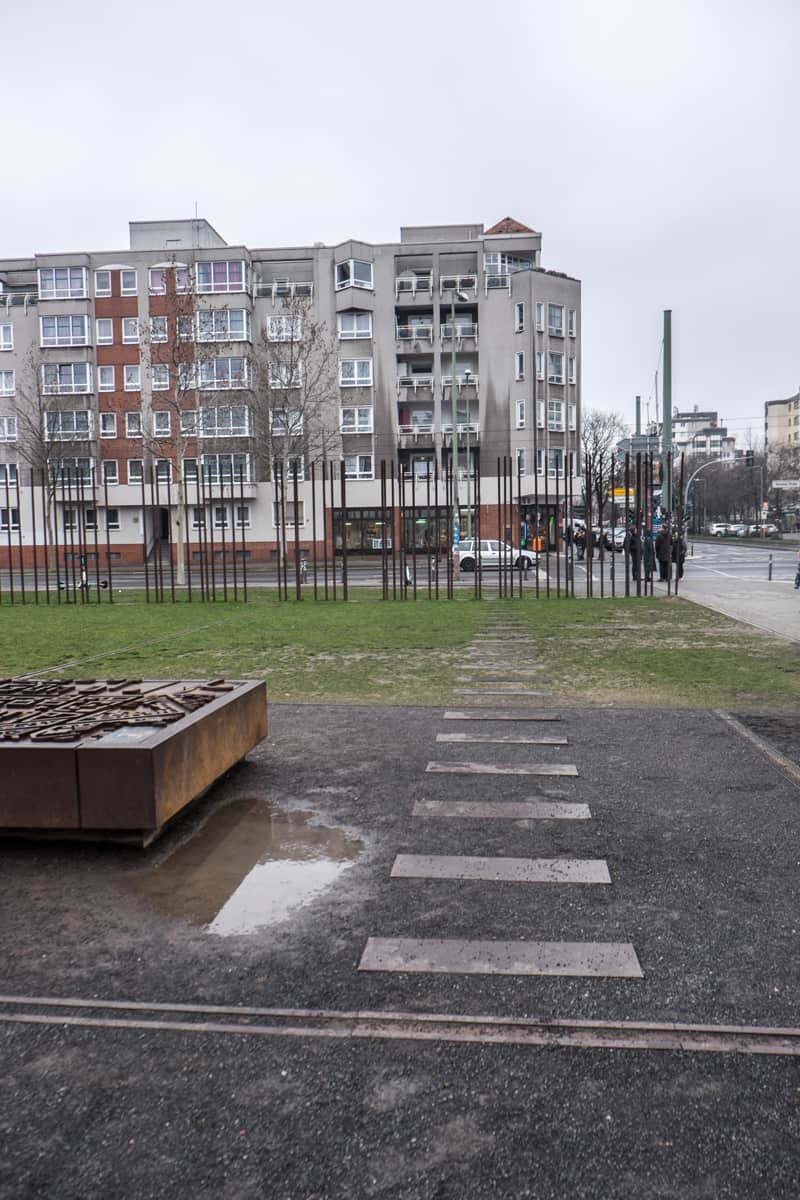
Rectangular panels on pavement and in the grass show the route of an escape tunnel in Berlin.
Photo exhibitions form much of the tour when underground in what is a former civil defence shelter and it brings the stories to life. You will catch a glimpse at a room that formed part of an air-raid shelter on the Berlin tunnels tour, although you will have to take the underground bunker tour (Tour 3) to delve more into that part of the history and see what relics of these hideouts are left.
Thousands were built in the city to provide safety and despite being able to see one, it’s still unknown how many more exist that have yet to be found.
For those who don’t have the time for the tour or who want to see a reconstruction of what the bunkers that no longer exist look like, the Berlin Underworlds Association run virtual guided tours . You can learn more about the Drivers’ Bunker, the Speer Bunker, the Goebbels Bunker and the Führerbunker, supported by historical overviews, construction plans and interviews with historians and witnesses.
The cost for the virtual tours is €9.50 and lasts approximately one hour.
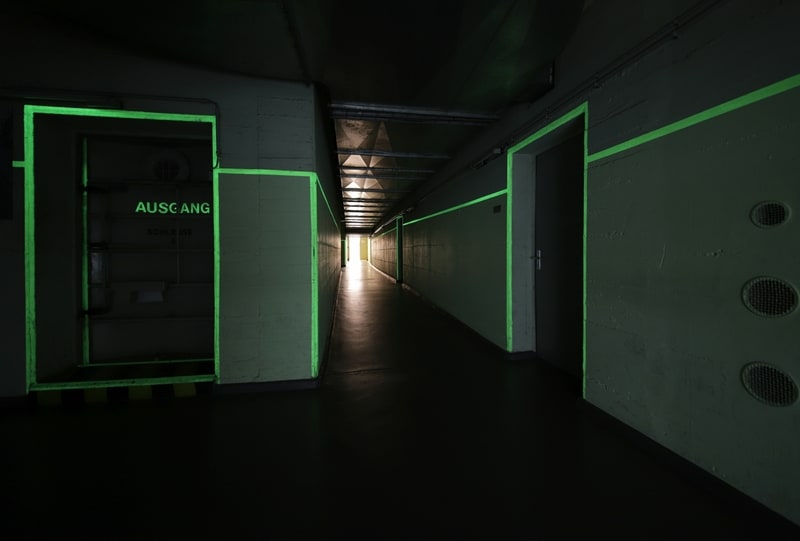
What lies beneath Berlin is well worth viewing. We take riding a metro system for granted without realising how instrumental it was for those planning escape, those seeking shelter and those harbouring secrets.
The guide was both passionate and knowledgeable about the history and expertly clued up on the facts, figures and questions presented by the city’s complex history. To condense Berlin’s history into sizable parts that you can understand is commendable. I even met locals who had said they had wanted to take this tour for the past 10 years to better understand their past.
Not only do you get to grips with the city’s history, but you get to learn about it from a truly interesting perspective and to understand a complex time in modern history in that way is priceless.
Many thanks to the Berlin Underworlds Association for allowing me the opportunity to attend one of their tours.
About Becki
Becki Enright is a British Travel Press Award-winning writer whose work focuses on changing perceptions about misunderstood aspects of destinations. Her writing combines storytelling with insight into the social, historical, political and economic factors that shape the country or place in relation to tourism. Becki has appeared live on Sky News and CNN and has contributed to high profile media including National Geographic, Time.com, Guardian online, New York Times, Grazia and Buzzfeed.
20 May 2014 at 4:15 pm
I just did the underground tour last week, it was pretty cool! I also recommend that you check out the abandoned brewery near Schöneweide station (which you have to sneak in), and also the Stasi museum.
Brad Bernard says
17 May 2014 at 5:46 pm
How cool is that? I’m definitely linking here for the Berlin section of my Best Travel Experiences. The tunnels are so fascinating and capture a time when life was much different.
Leave a Reply Cancel reply
Your email address will not be published. Required fields are marked *
- Article Archives
- Work with me
- Privacy Policy

This website uses cookies to improve your browsing experience and analyze the use of the website. Learn More

Berliner Unterwelten – Berlin Bunker Tours

This post is about Berlin's underground bunkers and air raid shelters built by the Nazi government during WW2, and by the West Berlin government after the war, and how you can tour them.
We also cover tours of an escape tunnel during the time of the Cold War and the Berlin Wall.
- Tours in English
- Mythos Germania
- Third Reich + W W 2 B e r l i n Sights
- How to Find Hitler's Bunker
Like many cities, Berlin has a hidden life under the surface.
The sewage system, gas, water electricity, the subway, pneumatic tubes – and in the case of Berlin the air raid shelters and bunkers from World War II.
And visitors to Berlin can take a bunker tour to discover this hidden network of tunnels and shelters underground.
Tours are offered by the organization "Berliner Unterwelten e.V.", an organization consisting of about 350 members of diverse professional backgrounds.
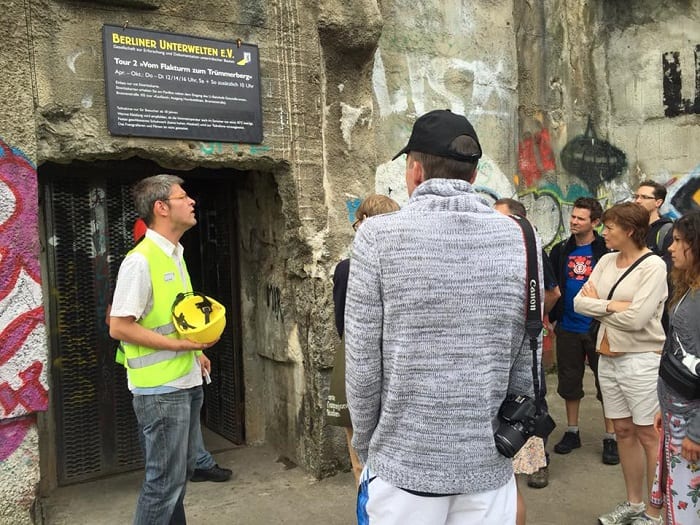
These members research and make the underground bunkers accessible to the public by giving tours in various languages, offering an exhibit as well as through publications.
Their focus is on World War II and the Berlin Wall.
Even though the Berlin Wall is far from being subterranean architecture, escape tunnels - more than 70 – played an important role in people’s way to freedom.
Not all bunkers are accessible anymore, for example, Hitler’s bunker has been excavated and filled in and is located underneath what is today a parking lot.
If you decide to go there, a bilingual information board helps to understand when, why, and how the bunker was built.
The board was installed by “Berliner Unterwelten - Berlin Underworlds”.
Be sure to check out our list of Berlin walking tours .
WHERE DO THE BUNKER TOURS START FROM?
The headquarters of Berliner Unterwelten and the start of the most popular bunker tour is near the transportation hub “Gesundbrunnen” (with U-Bahn-and S-Bahn station) ( map ).
If you exit from the S-Bahn station, it'll be to your left. It's located right next to the U-Bahn station.
Just follow the signs for “Berliner Unterwelten”.
The U-Bahn (subway) station was built before the war and parts of it then transformed into an air-raid shelter.
There is the permanent exhibition “ Mythos Germania ” about Hitler’s and Albert Speer’s (Hitler’s favorite architect) plans for the urban renewal of Berlin in the Third Reich with a lot of oversized buildings.
The exhibit is open April thru November and December 26 through January 10 (closed on New Year’s Day) from 11 am to 6 pm (last entrance 5 pm) and is EUR 6.00 for adults.
BERLIN UNTERWELTEN TOURS IN ENGLISH
Berliner Unterwelten provides 4 of its tours in English. Two of these outings are 90 minutes and the last one is 120 minutes long.
Ticket prices range from €15-€18 per person, but students and trainees can get discounts if they can show proof of a student ID.
There is also a self-guided tour of an exhibit titled " Mythos Germania ", which covers the topic of the Nazi's planned rebuilding of Berlin.
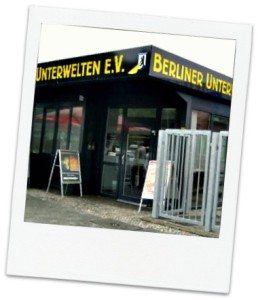
Tour 1 - Dark Worlds Tour
Explore one of the few remaining bunkers from WWII.
Discover what life during wartime was like for the average citizen of Berlin.
In addition to learning about the Third Reich, you'll also have the opportunity to see some of the histories behind city subway and sewer systems.
Although this tour is available all year long, scheduled dates are subject to change.
- Ticket Prices: €16 per person | €13 for students/trainees
- Duration: 90 minutes
- Usual Availability: Wed-Mon @ 11:00 am, 13:00 (1 pm) & 15:00 (3 pm)
- Additional tours offered Apr-Oct
- Book this tour here .
Due to the nature of the content of this tour, children 7 and younger are not permitted.
Berliner Unterwelten recommends the appropriateness of this tour for 14 years and older.
Tour 2 - From Flak Towers to Mountains of Debris
Hitler ordered the construction of six anti-aircraft, or "Flak," towers to protect Berlin from enemy aircraft early in WW2.
Only three were built, and they were blown up after the war. However, the Flak tower in Gesundbrunnen's Humboldthain Park was only partially destroyed.
Visit 3 of the original 7 floors of this tower, and take a look at the incredible depth of the tower.
Learn about the ongoing process of rubble removal and its partial transformation into a bat sanctuary.
- Usual Availability: Select days @ 11:00 am, 13:00 (1 pm).
- No Tours offered Nov-Apr
Tour 3 - Bunkers, Subways, and the Cold War
Civil protection shelters were reactivated or built in West Berlin in preparation for a nuclear war.
Visit the civil defense shelter known as Blochplatz and learn about how it was used during WWII and repurposed for the Cold War.
This shelter was intended to protect citizens in case of nuclear war, and it served multiple purposes.
As you trace Berlin's sometimes disturbing history, you'll find out how people might have survived in a worst-case scenario.
Afterward, travel via the subway to the Parkstrasse U-Bahn station to see what a more modern bunker looks like.
- Ticket Prices: €15 per person | €13 for students/trainees
- Availability: Select Days @ 11:00 am, 13:00 (1 pm), 15:00 (3 pm)
Tour M - Under the Berlin Wall
After the Berlin Wall was constructed, many people made attempts to dig tunnels underneath and avoid detection.
In total, there were more than 70 different tunnels built, and this tour will take you to the site, underneath the Berlin Wall Memorial , of at least seven of them.
Find out which escape tunnels were most successful and discover tales of betrayal that you may not have heard about.
You will also see one of the tunnels from an underground exhibit space.
- Ticket Prices: €19 per person | €15 for students/trainees
- Duration: 120 minutes
- Availability: Usually Thur-Mon @ 3:30 PM
Mythos Germania - Vision and Crime
The Nazi government had a magnificent plan to build the "World Capital of Germania", plans that were ultimately dashed by WW2.
The exhibition depicts Nazi-era Berlin architecture and urban planning, as well as the Nazi regime's ideological aspirations and the twisted methods used to achieve them.
You will learn about the people and businesses who lost their homes and property as those who became enslaved in pursuit of the Nazi's plans.
- Ticket Prices: €6 per person | €3 for students/trainees
- Availability: Saturdays 11:00 am till 17:00 (5 pm)
- Book tickets for this exhibit here .
Reviews of Berliner Unterwelten
With a score of 4 ½ out of 5 stars on TripAdvisor, it's fair to say that overall ratings for this service are very good.
Customers truly appreciate the opportunity to explore historic locations tied to both WWII and the Cold War.
Guests are drawn to their tours for a variety of reasons that we will explore in further detail below.
Military History
If it wasn't already obvious, most of the visitors who enjoy these tours are very interested in military history.
Several reviewers feel that this is a wonderful opportunity to see some of the most significant buildings in Berlin.
Even if you're not well-versed in the history of this city, your tour guide will provide a plethora of information about each location.
English Tours
Guests from English-speaking countries really appreciate the translation services provided by this company.
Although they don't offer all of their tours in English, most customers are just happy that there are a few historically significant trips they can enjoy.
Several visitors recommend that you arrive early for these outings because they sell out quickly.
Excellent Tour Guides
A majority of guests who leave positive reviews are most impressed by their tour guides. Several comments indicate that they are not only friendly and helpful but also very informative.
Some visitors were surprised to find that their guide was actually very funny, making the whole experience even more enjoyable.
Historical Simulation
On some tours, this company provides a simulation of what life was like during wartime.
Other tours simulate life in a bunker, giving their guests a taste of what life might be like during a nuclear war.
Getting the chance to see and experience what these bunkers were built for can be very enlightening, and some visitors felt that it made history come alive.
Effective Storytelling
In addition to the military history tied to the locations featured on these tours, guides will also tell stories about real people who were affected by either WWII or the Cold War.
Both events displaced a lot of families and put several people in peril; guests really appreciate the opportunity to hear their stories and discover what life was like for some of the citizens of Berlin.
Things to know before taking the bunker tours:

Please note: The tours cover difficult periods of German history and are conceived for adults.
They are recommended for youths aged 14 and older. Children under 7 are not admitted; parents’ discretion is asked for children aged 7 to 14.
As the tours are not in a museum, but in the real underworld, toilets are not provided. Make sure to use one before starting the tour.
The shopping mall Gesundbrunnen-Center right next to the train station has restrooms.
And please, wear sturdy footwear (no sandals, no flip-flops) and take a sweater – even in summer, the underworld is very chilly.
Also, a small selection of tours also runs during the winter.
Related Content:
- Third Reich Sights in Berlin
- Get 27% off with Berlin Welcome Card
Choose a Destination... I want them all PLUS general travel tips. Amsterdam Berlin Boston Charleston Chicago Dubai Lisbon London Los Angeles Miami Nashville New York City New Orleans Paris Philadelphia Prague Rome San Francisco Washington DC
About The Author
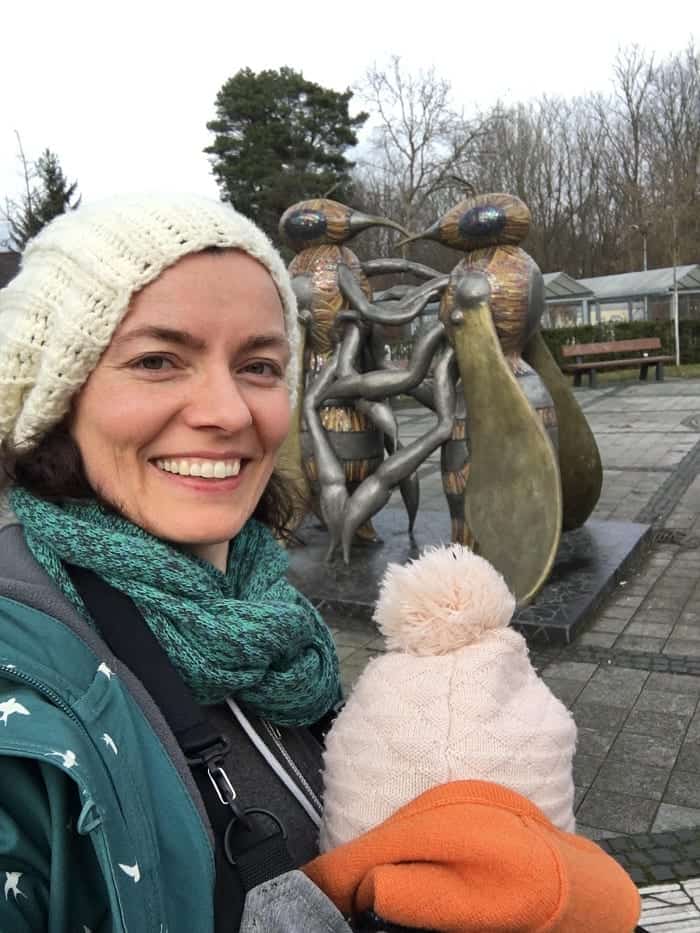
Anne Wittig
North america, united kingdom & ireland, middle east & india, asia & oceania.

Exploring Hitler Bunker in Berlin: A Historical Journey
by Original Berlin Tours | Mar 7, 2024 | Cold War Tour Berlin
Welcome to our comprehensive guide to visiting the Hitler Bunker in Berlin. If you are a history enthusiast or simply curious about World War II, this is a must-visit destination. A visit to the bunker will allow you to step back in time and learn more about a significant period in history. In this article, we will provide you with all the information you need to plan and make the most of your visit to the Hitler Bunker.
1. Understanding the Importance of the Hitler Bunker
The Hitler Bunker, also known as the Führerbunker, was a subterranean complex located near the Reich Chancellery in Berlin. It served as Adolf Hitler’s final headquarters during the last months of World War II. The bunker played a critical role in the final days of Hitler’s regime and witnessed the events leading up to his demise.
Today, the site serves as a historical monument and provides visitors an opportunity to learn more about the final days of World War II and the consequences of Hitler’s actions. It’s a place where history comes alive, allowing us to reflect on the horrors of war and the importance of striving for peace.
2. Planning Your Visit
2.1 location.
The Hitler Bunker is located in Berlin, Germany. You can find it near the Brandenburg Gate in the Mitte district. The exact address is Wilhelmstrasse 77. The bunker has been preserved and restored, offering visitors a chance to explore its underground chambers.
2.2 Opening Hours and Tickets
The bunker is open to the public from Tuesday to Sunday, from 10 am to 6 pm. It is closed on Mondays. Admission tickets can be purchased on-site or online in advance. We recommend buying tickets online to avoid any potential queues. Be sure to check the official website for the latest information on ticket prices and availability.

2.3 Guided Tours
To make the most of your visit, consider joining a guided tour. Professional guides provide in-depth knowledge and insights into the historical significance of the bunker. Guided tours are available in multiple languages, including English, German, and French. The tour duration is around one hour, during which you will explore the various rooms and learn about the events that unfolded in this secret underground complex.
3. What to Expect During Your Visit
When you arrive at the Hitler Bunker, you’ll notice a solemn atmosphere that pays tribute to the historical significance of the place. As you venture underground, you’ll be taken on a journey through the final days of World War II. The tour will guide you through various rooms, including Hitler’s study, conference rooms, and the bunker’s command center.
While exploring, you’ll have the opportunity to see authentic artifacts, historical photographs, and displays that offer a glimpse into Hitler’s life and the desperate situation faced by those inside the bunker. It’s a chilling experience that will leave a lasting impression on visitors.
4. Tips for a Meaningful Visit
- Arrive early to avoid crowds and ensure you have sufficient time to explore the bunker.
- Dress appropriately, wearing comfortable shoes as you’ll be walking and standing for the duration of the tour.
- Respect the solemnity of the place and maintain a respectful demeanor throughout your visit.
- Listen attentively to your tour guide, as they will provide valuable insights into the historical context.
- Capture memories, but remember to be mindful of the rules regarding photography inside the bunker.
- Take your time to reflect on what you learn and experience. The bunker holds significant historical importance and has a somber atmosphere that warrants contemplation.
5. Exploring Beyond the Bunker
If you’re interested in further exploring World War II history, Berlin offers several other significant sites. You can visit the Topography of Terror museum, the Memorial to the Murdered Jews of Europe, or take a guided tour to learn about the Berlin Wall’s history. These additional experiences will provide a well-rounded understanding of the city’s past and the impact of World War II.
Visiting the Hitler Bunker in Berlin is an exceptional experience for anyone with an interest in history. It allows us to learn from the past, reflect on the consequences of war, and understand the importance of peace. As you plan your visit, remember to book your tickets in advance and consider joining a guided tour to enhance your understanding of the bunker’s historical significance. Take your time to absorb the atmosphere and knowledge, while also exploring other historical sites in Berlin. We hope your visit to the Hitler Bunker deepens your understanding of World War II and brings us closer to ensuring a brighter future.
Check out our other cities
Berlin tours.
- Original Berlin Tours
- Berlin Pub Crawl
- Pub Crawl Berlin
- Free Berlin Tours
- More Berlin Tours
- Cold War Tour Berlin
- World War Tour Berlin
- Sachsenhausen Tour
Barcelona Tours
- Free Barcelona Tours
- Barcelona Pub Crawl
- Pub Crawl Barcelona
Budapest Tours
- Free Budapest Tours
- Budapest Bar Crawl
- Pub Crawl Budapest
Madrid Tours
- Madrid Pub Crawl
- Pub Crawl Madrid
- Nice Pub Crawl
- Nice Bar Crawl
- Pub Crawl Nice
Amsterdam Tours
- Amsterdam Pub Crawl
- Bar Crawl Amsterdam
Paris Tours
- Pub Crawl Paris
Dublin Tours
- Pub Crawl Dublin
Warsaw Tours
- Pub Crawl Warsaw
Stockholm Tours
- Pub Crawl Stockholm
Other Links
- Original Pub Crawls
- Be Original Tours
- Original Free Tours
- E-Ticket Trail
WhatsApp us
- Skip to primary navigation
- Skip to main content
- Skip to primary sidebar
- Skip to footer
TravelAwaits
Our mission is to serve the 50+ traveler who's ready to cross a few items off their bucket list.
11 Must-Visit Berlin WW2 Sites | Amazing Time-Travel Journey for the History Buffs

gary718 / Shutterstock
- Activities and Interests
- Destinations
- History and Culture
Note: The Travel Awaits team regularly updates content to provide the latest, and most accurate information to our readers. The updated content in this article may not reflect the views or opinions of the original author.
Tracing World War II history in Berlin can be a challenge. During the conflict, the city was extensively bombed, and by the time it was over, much of Berlin lay in rubble, including the Reichstag, the seat of the German government. Some places in Berlin that survived were later demolished, as the Soviets who occupied the city worked to erase or destroy anything connected with Germany and the Second World War. However, several World War II sites survived and are now open to visitors.
These World War II sites in Berlin carry the ghosts of World War II. They include memorials to those who suffered, restorations of Berlin treasures, and even bullet marks in a sculpture, but they all give a sense of the immense struggle that centered here in the dark days of the war.
Most of these highlights lie in central Berlin. You can see many of them in a day or two, either by walking or by hopping on a bus. Others are located just a short distance outside the city.

Sharon Odegaard
11 Must-Visit Berlin WW2 Sites | Journey Through Time for the History Buffs
For a quick summary of these top places to visit check out this slideshow or continue on and read to learn about each in more detail:
1. The Reichstag

The Reichstag in Berlin was once a symbol of power. Completed in 1894, it housed the government for several decades. In 1933, a famous fire destroyed part of the building shortly after Hitler became chancellor. He blamed others for the fire and closed the building, using the situation to take more power for himself. Perhaps he actually engineered the fire? No one knows.
Russian troops rushed into the Reichstag in April of 1945, determined to topple this last bastion of Nazi rule. A fierce battle ensued before the Russians captured the Reichstag. Severely damaged, the building lay abandoned until 1989, when the Berlin Wall fell. When the Communists left the city, the new, unified German government moved into the Reichstag. The interior of the building is modern, with the notable addition of the iconic glass dome over the original building.
On your tour, note the wall written on by Russian soldiers at the end of World War II. The Germans decided to leave this wall exposed during the repairs as a reminder of the building’s history.
Free tours of the building are given daily. An audio guide is included. Register online for your tour before you arrive in Berlin. Bring your original ID (not a copy). This is the seat of the German government, and security is taken seriously.
Explore hotels and Airbnbs near The Reichstag
2. Memorial To The Murdered Jews Of Europe

Berlin’s Holocaust Memorial is made of plain cement blocks, or stelae, laid out in neat rows on undulating ground. You’ll find no writing, no names, and no explanations. The stelae are of different heights and lengths. It’s surprising, but even the site’s official name, the Memorial to the Murdered Jews of Europe , is somewhat vague. Certainly, the Holocaust of World War II is memorialized here, but earlier pogroms are as well.
To help connect the memorial with its purpose, be sure to take a tour of the almost-hidden underground Information Center . It’s at the far end of the memorial, away from the street side where you enter. This small museum tells the stories of individual people affected by the genocide. At the entrance, six large portraits of lost Jews hang, larger than life. These represent the six million Jews murdered in the World War II era. This theme of individuals affected by the war continues throughout the museum.
One room is dedicated to families, with photos and words that speak for themselves. You’ll see notes hastily scribbled and thrown from trains. In the Room of Names, individual names line the walls, and you’ll hear a voice reading about each person and telling their story.
The Information Center is open every day except Monday. The Memorial is open to busy streets and always accessible. Allow about a half hour to see the Memorial and an hour to tour the Information Center. There’s a similar museum dedicated to the Holocaust in Washington, D.C .
Explore hotels and Airbnbs near Memorial To The Murdered Jews Of Europe
3. Topography Of Terror Museum

The Topography of Terror is a Berlin documentation center that opened in 2010 to inform all who visit about the Nazi reign of terror. A visit to the Topography of Terror takes you to the very place where the war originated and where countless people suffered.
It’s an outdoor and indoor exhibit built along the exposed walls of what was once the headquarters of the Secret State Police, the SS, and the Reich Main Security Office. Work your way along the chronological displays outside. This excellent overview of the rise and fall of the German empire in the Nazi era is built along the original cellar walls.

Inside the documentation center, you’ll see displays memorializing the victims of terror, commemorating those who worked to end the terror, and explaining the events that transpired in Berlin from 1933 to 1945 and afterward. The center shows how Berlin went from one oppressive Nazi regime to another; the Berlin Wall cut through this same place just a few years later, bringing a different kind of suffering to Berliners.
The documentation center is open daily and is free of charge. Tours lasting one hour are also free and cover different topics.
Explore hotels and Airbnbs near Topography Of Terror Museum
4. Site Of Hitler’s Bunker
When visiting Berlin, the site of Hitler’s bunker is a must-see.In the final days of the war in Europe, Adolf Hitler, his mistress Eva Braun, and members of the Nazi inner circle retreated to an underground bunker in Berlin. The former air raid shelter served as their final headquarters. On April 29, 1945, Hitler married Braun, and a day later, they committed suicide.
When the Russians took over this sector of Berlin after the war, they attempted to blow up the bunker but failed. After the Berlin Wall went up nearby, no further demolition attempts were made. Later construction excavated some of the bunker. A parking lot covers the area today.
It’s amazing that this historical site featured no plaque until 2006. The bunker remains closed to the public, but you can visit and see how close to the Reichstag and other Berlin landmarks it is. A lawn borders the parking lot, so you can safely stay as long as you’d like.
Before I went to Berlin , I figured I would skip standing in this parking lot, since nothing of the bunker is visible. But when I went, I found that just standing on the site and reading the plaque was an interesting experience. It’ll only take 10 minutes or so to take in this piece of Berlin history.
Explore hotels and Airbnbs near Site Of Hitler’s Bunker
5. Berlin Cathedral

The impressive Berlin Cathedral , with its magnificent dome, sits among the stately museums on Museum Island, with the Spree River flowing nearby. The baroque-style cathedral is the largest Protestant church in the area and dates to 1905. Kaiser Wilhelm II wanted to build a cathedral to rival Saint Peter’s Basilica in Rome and Saint Paul’s Cathedral in London.
After suffering bomb damage in World War II, the Berlin Cathedral sat in disrepair for decades. The restoration was finally completed in 1993. Be sure to climb the 267 steps up to the dome for a magnificent panoramic view of Berlin.
Explore hotels and Airbnbs near Berlin Cathedral
6. German Historical Museum

Elena Fahro / Shutterstock
Berlin has no major museum dedicated to World War II, but a section of the large German Historical Museum used to cover the subject. On the ground floor, you were able to find an exhibit titled The Nazi Regime and Second World War . Videos as well as objects and documents covered what transpired in Germany from 1933 to 1945. While not large, the exhibit was fascinating for anyone interested in World War II.
An hour was more than enough time to tour the exhibit. The museum is adjacent to the Berlin Cathedral, so you can plan to visit both of these in about 3 hours.
Due to the renovations, the German Historical Museum’s permanent exhibition is now closed. It is expected to open again at the end of 2025. The adjacent Pei Building’s daily opening hours in December 2023 are 10 am to 6 pm, (Thursday 10 am to 8 pm). It will be closed on 24 December
Explore hotels and Airbnbs near German Historical Museum
7. Tiergarten

The Tiergarten in central Berlin, an oasis of greenery and ponds amid glass and chrome, provides 500 acres of park. During World War II, bombs damaged the Tiergarten. Then, with so much of Berlin suffering after the war, people cut down the trees in their desperation for firewood. Most of the green growth in the Tiergarten today dates only from the 1950s.
World War II shows up in the Tiergarten in the form of a massive Soviet war memorial. This commemorates the Russian soldiers who died liberating Berlin from the Nazis. The marble used to build it came from Hitler’s Chancellery. Two T-34 tanks are on display, and a statue of a Soviet soldier rises into the air, standing guard over the memorial.

Also look for the impressive sculpture honoring composers Beethoven, Haydn, and Mozart. When you get close, you can observe the bullet holes from the battles of World War II still in the marble. The memorial was taken down in 2000, restored, and reinstalled in its place of honor among the tall trees.
With its World War II sites and Berlin Wall markers, Berlin is an intense city. After a day of touring, amble through the Tiergarten, clear your mind and relax for a while by the peaceful pond.
Explore hotels and Airbnbs near Tiergarten
8. House Of The Wannsee Conference

ESB Professional / Shutterstock
History buffs may want to include a day trip to the town of Wannsee, just a 30-minute train ride from central Berlin. The mansion where the Wannsee Conference took place in 1942 is open to visitors. This is where German leaders, called together by Reinhard Heydrich, met to decide how to implement the Final Solution.
The House of the Wannsee Conference became an official museum and education center on the 50th anniversary of the conference in 1992. Exhibits inside the house reveal what happened at the fateful conference. Documents, propaganda posters, and leaflets are on display. You can also peruse archival materials from Eastern Europe that became available in the 1990s after the fall of the Berlin Wall.
Explore hotels and Airbnbs near House Of The Wannsee Conference
9. Sachsenhausen Memorial And Museum

Sergio Foto / Shutterstock
About 20 miles by train outside Berlin, the Sachsenhausen Memorial and Museum was once the site of a large concentration camp. Opened before the beginning of the war, the camp held a total of more than 200,000 prisoners by the time it was liberated and closed in 1945. Knowing that the Soviets were on their way in the spring of 1945, the German SS special units tried to evacuate the camp, forcing inmates to participate in death marches. Only the sick were left behind to greet their liberators.
Today, the camp is a memorial to those who suffered and lost their lives here. The barracks have been reconstructed so that visitors can get an idea of what life was like during the war. The tour includes the voices of 20 prisoners talking about work, violence, and living with their memories. It’s a sober place, but those who run the museum and memorial make it a place of remembrance to honor those lost.
I highly recommend the organized tour of Sachsenhausen. Make the most of your visit by learning the background of the camp and hearing the stories of the prisoners as you go. The official on-site tour is about 3 hours long.
Berlin is a complex city with layers of history on display. Modern architecture and quirky culture are easy to find. Signs of World War II are all around in Europe , ready to be discovered and explored.
Explore hotels and Airbnbs near Sachsenhausen Memorial And Museum
10. Bebelplatz
The site of the famous Nazi book-burning campaign of 1933 is an interesting World War II sight to see in Berlin. When you stroll across Bebelplatz you’ll see a glass plate set in the paving stones and below it an underground room with empty bookshelves.
Heinrich Heine’s foreboding words: “Those who burn books will in the end burn people,” is one of the most frequently quoted phrases in recent history. These sobering words grace the bronze plaque you will find at your feet in the center of Bebelplatz Square.
The 20.000 burnt books were chosen according to blacklists made by the librarian Wolfgang Herrmann, which were then used to plunder private bookshelves, public libraries and academic collections.
Explore hotels and Airbnbs near Bebelplatz
11. Olympic Stadium
Built by renowned architect Werner March, this geometric masterpiece has a dark history.
At the dawn of the war, the German company Blaupunkt produced primers for anti-aircraft weapons here, but among the general public, the Reichssportfeld was known for hosting propaganda events.
Today, the stadium is an open-air venue used for concerts and other large events. On event-free days, visitors can take a tour of the stadium and learn about its role during WW2.
For more to see and do in Berlin, visit this page .
Explore hotels and Airbnbs near Olympic Stadium
What Month Is Best to Visit Berlin WWII Sites?
The best time to explore Berlin is from May through September. You will enjoy good weather, sunshine, and moderate temperatures. Long days and calm and warm evenings are ideal conditions for exploring Berlin.
How Many Days in Berlin Is Enough To See WWII Sites?
4 days in Berlin should be enough for first-time visitors. But Berlin is the biggest city in the European Union and there is plenty to see and do here, so plan your trip carefully to make sure you get the most out of your time.
Can I See Bullet Holes in Berlin?
Yes, you can see bullet holes on the Victory Column, beneath the arches near the Friedrichstraße S-Bahn station and Alexanderplatz. They can also be observed on the columns of the presently closed Pergamon Museum and the Bode Museum, as well as along the embankments of Museum Island.
How Much of Berlin Was Damaged in WWII?
80% of Berlin’s city center was destroyed over five years of bombing. The German capital was hit by 67,607 tonnes of TNT over five years of bombing which, coupled with intense street fighting, destroyed most of the constructed area in Berlin.
Can I Go on a Tour of the WWII Sites in Berlin?
Yes. Experiencing any of the WWII sites tours in Berlin is something quite different than watching films and documentaries. Putting yourself in the middle of a landscape that hosted some of the worst acts of humanity is much more overpowering.

As the owner of the travel blog, Exploring Our World , Sharon enjoys taking her readers on a journey with her. Articles often delve into the history of a place, and by adding in a generous number of photos, she inspires others to explore for themselves. In her early travels, she was most frustrated by coming back home and learning that she had missed a fascinating sight or a hidden gem. Now she helps travelers prepare for a trip by passing along travel tips, pointing out lesser known things to see, and alerting them to enjoyable day trips from major cities.
Her travel articles have been published by Stripes Europe Newsletter and the World War 2 Writing and Research Center. Whether she's discovering more about her hometown of San Diego, California or flying to faraway places, she enjoys sharing with travel lovers around the world.
Führerbunker
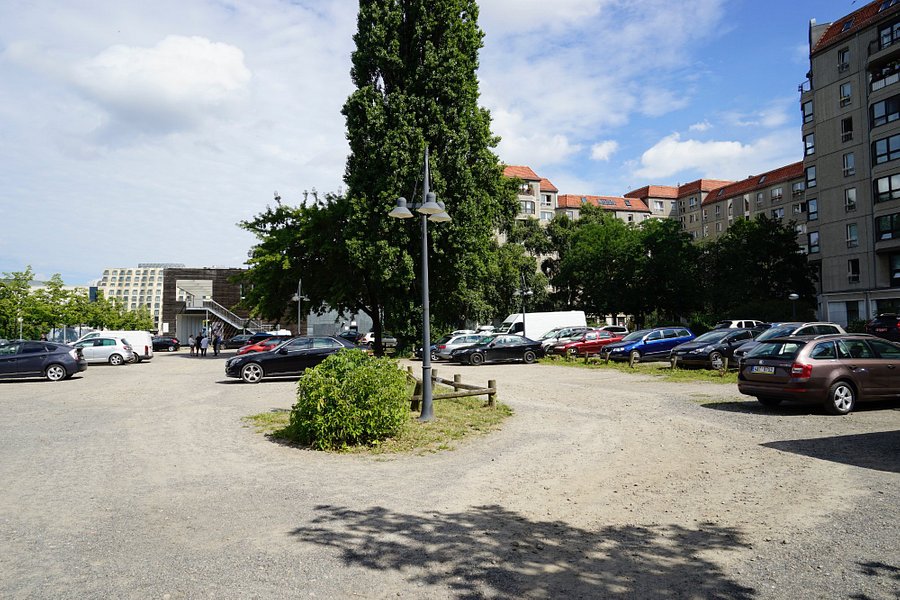
- Mohrenstraße • 4 min walk
- Potsdamer Platz • 5 min walk

Most Recent: Reviews ordered by most recent publish date in descending order.
Detailed Reviews: Reviews ordered by recency and descriptiveness of user-identified themes such as wait time, length of visit, general tips, and location information.
Also popular with travelers
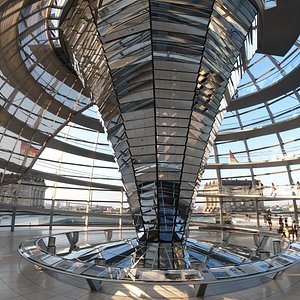
Führerbunker, Berlin
- (0.11 mi) Apartments am Brandenburger Tor
- (0.09 mi) Sixmiles Guesthouse
- (0.07 mi) BlnCty Hotel
- (0.19 mi) Motel One Berlin-Potsdamer Platz
- (0.23 mi) Hotel Adlon Kempinski Berlin
- (0.04 mi) Johnny's Bar
- (0.07 mi) Steel Vintage Bikes Café & Kitchen
- (0.09 mi) Rotes Kamel
- (0.11 mi) Alt-Berliner Wirtshaus
- (0.08 mi) Exitroom Burger, Coffee, Waffles, Cocktails
History Rob
Hi, I'm Rob, a historian & teacher. With this blog, I want to share my passion for the small everyday stories in history & life.
Visited: Fuhrerbunker in Berlin
Everyone who saw the movie ‘Der Untergang’ (if you didn’t, you should), knows where you could find Adolf Hitler during the last days of the war and his life: in his Führerbunker in Berlin. This Führerbunker is also the place where the leader of Nazi Germany committed suicide.
You would think that, like other important places and buildings of Berlin’s history, you can visit this bunker or there would at least be something touristy about it. But it’s actually the complete opposite. Because what remains of the Führerbunker is…an ugly empty parking lot. It almost disappeared from history, just like the secret Sylt concentration camp in Great-Britain.
I visited this place during one of my trips to Berlin. And for who’s interested, here is my experience:
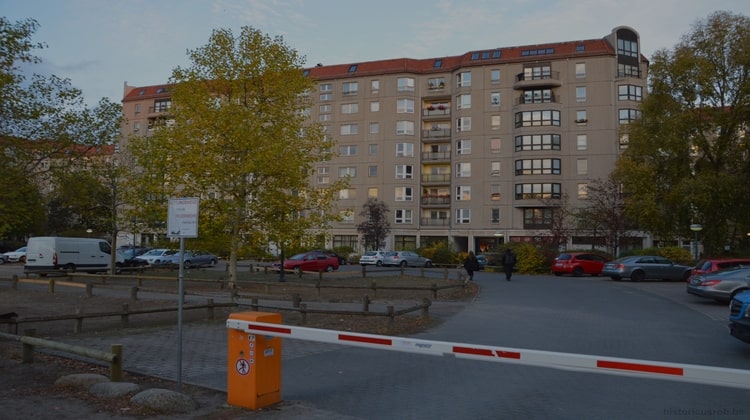
What is the Führerbunker?
The Fürherbunker is the bunker in Berlin where Adolf Hitler spent the last days of the Second World War, and also the place where he committed suicide. It’s also called the Reich Chancellery Bunker and now remains as a simple parking lot in the city centre.
The bunker complex was supposed to be an air-raid shelter for temporary stays, but extra rooms were built to transform it into a more permanent hiding place. The complex consisted of two shelters: a Vorbunker (upper bunker) and the Führerbunker. The first one was constructed in 1936, the latter in 1944/5. When the Allied forces were closing in on Berlin, the temporary shelter was transformed to a more permanent residence.
The section of the Führerbunker lay 2,5 metres lower than the upper bunker and approximately 8,5 metres below the surface. And that surface wasn’t a parking lot like it is now, but the garden of the old Reich Chancellery.
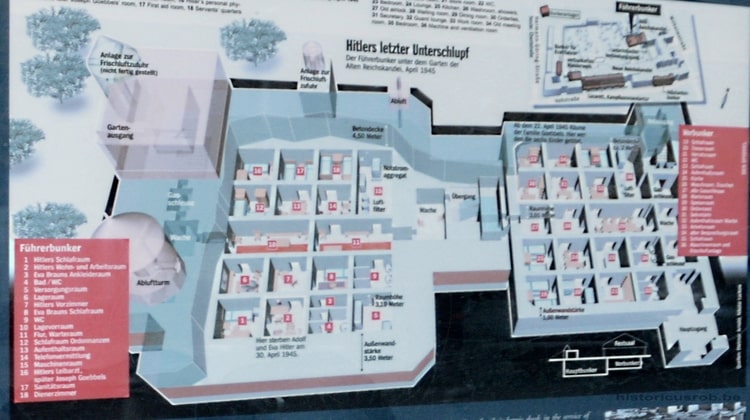
Was the Führerbunker a real stronghold?
Hitler’s bunker was made to protect him, especially while Allied forces (and with them a lot of bombardements) were closing in every day. Like in every bunker, the stairways and hallways were built with right angles.The roof was about 3 metres thick concrete, the walls even 4 metres!
Did Hitler really live in the Führerbunker?
Yes, Adolf Hitler really stayed at this Fürherbunker. In the beginning of 1945, on the 16th of January, Hitler moved into the bunker. A couple of months later, on the 30th of April, he committed suicide.
He even had high quality furniture and oil paintings from the old Reich Chancellery. He also had his own bedroom, office, sitting room and guest room installed. And he took his dog, Blondi, also with him.
But although there was a lot of attention spent on the interior, conditions were not great. Hitler’s bunker in Berlin was below the water table, what, even within the concrete complex, made the environment very damp and uncomfortable.
Hitler’s marriage in the Führerbunker
Hitler was certainly not alone in the Führerbunker in Berlin. Beside the working staff and his most important and closest political and military staff, a special woman also lived here: Eva Braun.
On the night of the 28th to the 29th of April (around midnight), the two got married after a small ceremony in the bunker.
Other known historical persons in Hitler’s bunker
Beside Eva Braun and Adolf Hitler himself, there were other important historical individuals staying in the Führerbunker in Berlin. The Goebels-family will be the most known of them.
Joseph Goebbels, the Nazi minister of propaganda joined Hitler in the bunker. But not alone. Because he also took his wife, Magda Goebbels, and their six children into the bunker. They all stayed and died in the Vorbunker.
The end and remembrance of Hitler’s bunker in Berlin
On the 2nd of May 1945, the Russian Red Army entered the bunker. After the war, the Red Army tried to destroy everything that remembered of the Nazi period. Including Hitler’s bunker in Berlin.
It was already partially flooded (remember the damp environment) and in 1947 they tried to blow it up. But that didn’t destroy the whole bunker complex yet. It was only in 1959 that the real demolition started.
The construction of housing in this area made sure that there was no room for a remembrance or a Nazi-memorial. Several rooms of the bunker are still underground, but are sealed or filled up. The emergency exit of Hitler’s bunker came out in the gardens of the former Reich Chancellery. Now it is an ugly parking lot.
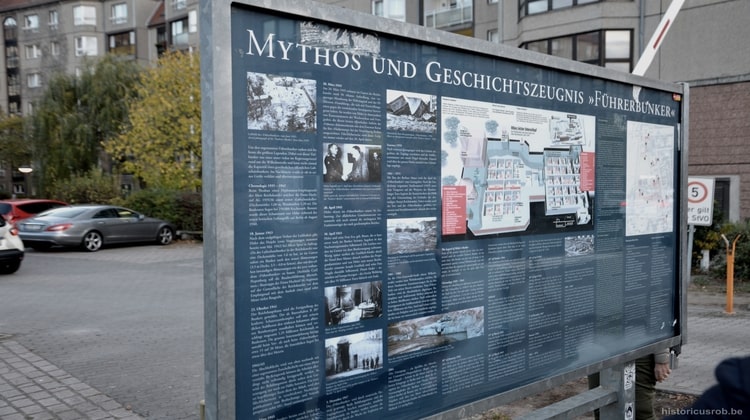
There is one information board that gives all the information and interior plans of the Führerbunker. It was placed in 2006, in the context of the Football World Championship in Germany.
My visit to Hitler’s bunker in Berlin: the Fuhrerbunker
When I visited the former place of Hitler’s bunker in Berlin, there were around 10 people reading the information board. The rest of the neighbourhood was desolated. You really need to know what you are looking for and where to do it. Otherwise you would never pass this place if you’re a tourist visiting Berlin.
Is it worth paying a visit? Well, it’s on your way from the Potsdamerplatz to the famous Jewish Memorial (if you take a little detour of one block). But it is what it is now: a desolated parking spot. It’s also a strange place if you’re standing there and think about the things that took place here. So it’s more up to you if you want to pass by this place. But it’s mostly a symbolic spot without anything to see.
If you are in Berlin, don’t forget to visit that other historical place: the Bebelplatz book burning . And if you want to know more about places that are disappearing from our history, you should read my article about the secret Nazi camp Sylt on an British isle .
Source: Wikipedia Trip Advisor Pictures: History Rob
Others also read:
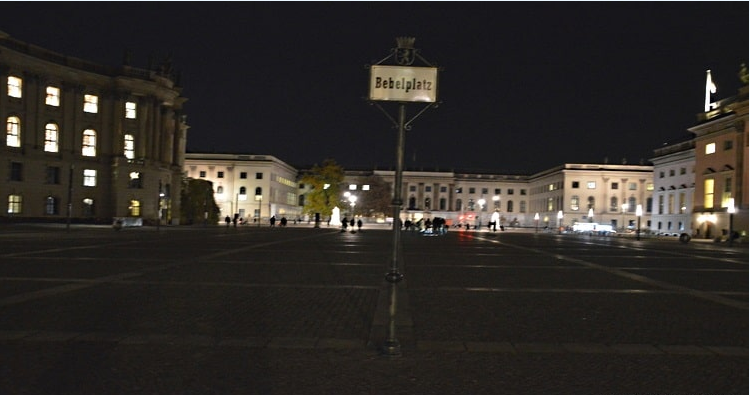
- History Blog
- Celebrity birthdays
Follow me on social media:

Cookie popup
Privacy overview.

- Tour 1 – Dark Worlds
- Tour 1 - Dark Worlds
- Tour 2 - From Flak Towers to Mountains of Debris
- Tour 3 - Bunkers, Subways and the Cold War
- Tour D - Tunnel and Bunker Dresdener Straße
- Tour F - The Fichtebunker Time Capsule
- Tour M - Under the Berlin Wall
- Important notes (about all tours)
- Permanent Exhibition
- Special Exhibition
- General Information
- Subway line 8
- Special Exhibits
- Restoration
- Expeditions and finds
- Oswald Berliner Brewery
- Information Panels
- Commemorative Plaques
- Myth of Germania 2008/2009
- The Beginings
- From “Germania” to the Downfall
- The Cold War in the Underground
- Reunification and Tunnel Opening
Online-Shop
- Data Protection
- Contact Form
- Info- and Bookshop
- Filming Requests
- Event Requests
- Login Intranet
Tour 2 – From Flak Towers to Mountains of Debris

- Berliner Unterwelten
- Guided Tours
- Public Tours
- From Flak Towers to Mountains of Debris
Explore the devastated ruins of a WW2 fortress
In 1940, Hitler ordered the construction of six anti-aircraft, or “Flak” towers to defend Berlin from enemy aircraft. Of these six, only three were built, and after the war they were “demilitarised” or blown up. However, the Flak tower in Humboldthain Park in Gesundbrunnen was only partially destroyed. Since April 2004, we have been leading groups through the interior of the tower. On this fascinating tour, visitors will be shown three of the seven floors of one of the biggest bunkers in the city. Here a dazzling underground landscape awaits – complete with dizzying views into the depths of the building. In addition, our guides present in-depth information about the history of the structure and the still on-going project to clean it up. To date, members of the Berlin Underworlds Association have spent a total of over 8,000 hours removing over 1,400 cubic metres of rubble – and, in the process, have created ideal sleeping quarters for bats. Therefore, so as not to disturb their hibernation and unnecessarily frighten our guests, we only offer this tour from April to the end of October.
Please note that the hygiene and distancing rules must be followed.
Recommended reading
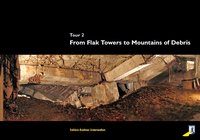
Tour 2 – From Flak Towers to Mountains of Debris Brochure | 2 nd edition | 2013 | 40 pages | € 5,- This publication is available in our ticket- and bookshop .
Special Advice, Equipment
Please note that our hygiene and distancing rules must be followed.
Special requirements regarding footwear apply on this tour:
- Sturdy, closed footwear is required in order to participate. (Shoes should fit well - with closed toes and closed heels and a stable sole - no high heels, sandals, flip flops, espadrilles or ballet pumps, etc.).
- Warm clothes are recommended! The temperature within the Flak Tower is 10°C / 50°F at best, even in the summer, and the humidity is considerable.
- Safety helmets, provided by the association, have to be worn throughout the duration of the tour.
Please read our important notes about our tours .
Minimum Age, Accessibility
All participants must be at least 18 years of age.
Due to limitations imposed by the structure of the buildings, our tours are not handicapped accessible.
Dates, Duration, Admission
Dates and tickets can be found in our Online-Shop . Winter break: November to April.
Duration: 90 min.
Admission: €16 (reduced €13) Our General Terms and Conditions are applicable.
Reservations and Tickets
Tickets for this tour are available via our Online-Shop . No ticket sale at the meeting point!
Please note that tickets purchased in advance are excluded from exchange, refund and return.
Tickets purchased in advance must be presented at the entrance of the tour.
Venue (with ticket), public transport
Meeting point with ticket: Lower platform of the bunker ruin (Flak Tower) in Volkspark Humboldthain. Please follow the blue and white signs from the entrance to the park next to the Badstraßenbrücke at the height of Brunnenstraße 105, 13355 Berlin. Google Maps Public transport: S+U / DB Gesundbrunnen, Bus 247
Information for groups
Until further notice this tour is not available for groups in English.
Tickets for this tour are available via our Online-Shop up to 30 days in advance. No ticket sale at the meeting point.
Impressions
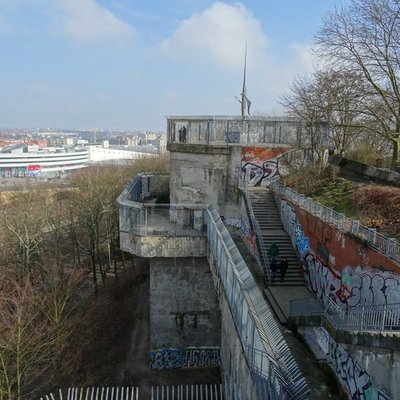
instagram takipçi satın al - instagram takipçi satın al mobil ödeme - takipçi satın al
bahis siteleri - deneme bonusu - casino siteleri
bahis siteleri - kaçak bahis - canlı bahis
goldenbahis - makrobet - cepbahis
cratosslot - cratosslot giriş - cratosslot
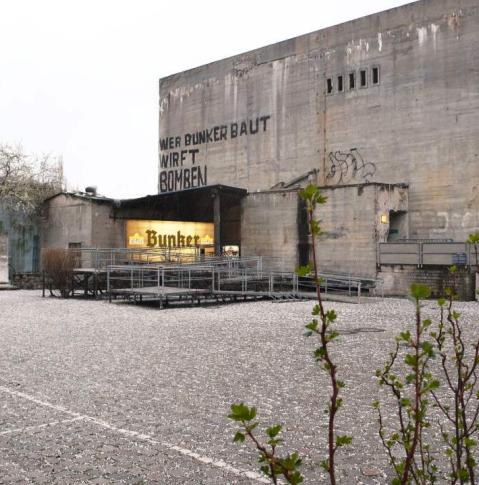
Bunker_Ansicht Hof
Berlin Story Bunker Tour
Unfortunately, this partner is no longer participating in the Berlin WelcomeCard. Thankfully, many great offers have been added! You can find a list of all the current Berlin WelcomeCard and Berlin WelcomeCard all inclusive partners here .
A Berlin Story Bunker tour is set in a recreation of the infamous Führerbunker, where Adolf Hitler spent his last days. The tour, a frightening reminder of a war that claimed 70 million lives, is understandably intimidating and visitors can only visit the bunker with a guide. A free audio guide is available in English, and most of the signage is in English and German. The bunker tour experience concludes with a film.
Berlin at its best
Unmissable attractions include the enormous dome of the Berlin Cathedral and the Brandenburg Gate, under which Napoleon and Hitler marched. Culture travellers will adore Berlin for its distinct multicultural neighbourhoods and colourful murals full of meaning – look out for the painting of the kiss between Honecker and Brezhnev. Lean in for a selfie with the Siegessäule (Victory Column) which featured prominently in Wim Wenders's 'Faraway, So Close'. Rococo and Prussian grandeur await at the riverside Charlottenburg Palace. Kurfürstendamme beckons with its vintage façades and shopping options. When night falls, head to the stylish cocktail bars or to the industrial-style nightclubs.
Berlin Story Bunker tour
Housed inside a 6,500-square-metre WWII bunker, the tour chillingly recreates some of the most infamous events in German history. The exhibition showcases the sequence of events leading up to Hitler's suicide in 1945 in the Führerbunker. A major attraction on the Berlin Story Bunker tour is a viewing of the reconstruction of Hitler’s personal study. Visitors are led through the bunker, where each scene is accentuated with stills from films such as 2004's 'Downfall', which chronicled the dictator's final days in the Führerbunker.
More Berlin for less money
The Berlin WelcomeCard lets you save up to 50% on attractions such as Museum Island and Charlottenburg Palace. The card also works on Berlin's public transport. It's particularly appealing for families, as each ticket allows up to three children to travel for free. With over 209 partners in 12 categories spanning castles, stages, restaurants, souvenirs and boat trips, the Berlin WelcomeCard ensures no one's left out. A free city guide and map are included. Discover Berlin in every conceivable way – by boat, bike, Segway or balloon flight.
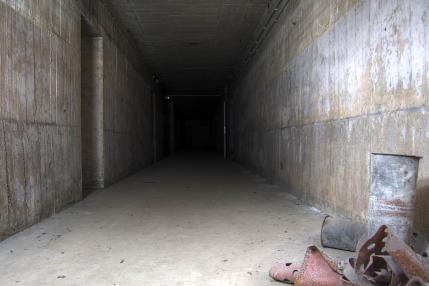
Bunker_Führung Gang
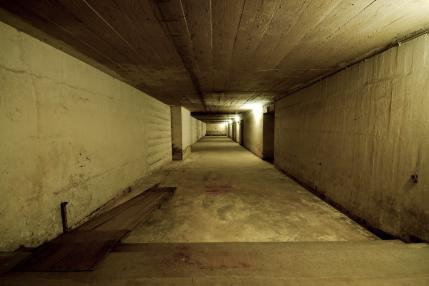
Bunker_ Führung Gang 2
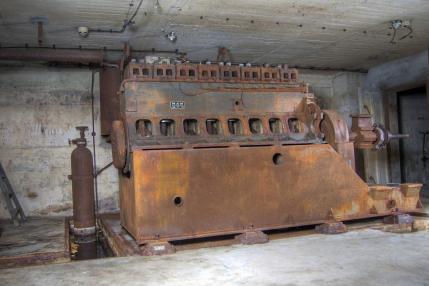
Bunker_Führung Generator
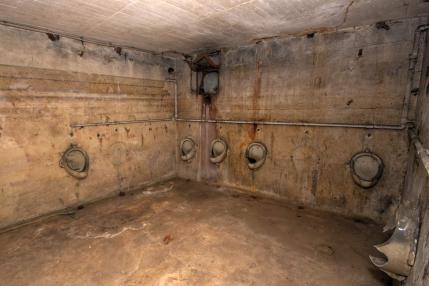
Bunker_Führung Toiletten
Kurz & Knapp
Mon - Sun 10 am - 7 pm Last admission 5:30 pm
Please check additional times on www.berlinstory.de
Schöneberger Str 23A 10963 Berlin Germany
Regular price: 13.50€ Audiotour approx. 90min, DE/EN/FR/ES/IT/NL/DK
Jetzt Vorteile sichern
Berlin welcomecard.
- Valid for 48 hours to 6 days
- Save 25% up to 50% at 180+ attractions
- With public transport ticket
- 3 children up to 14 years travel free of charge
- NEW : 72h and 6 days without public transport
Ermäßigungen in der Nähe
- Terms of Use
War News | Military History | Military News
The fuhrerbunker in berlin – amazing photo’s of the bunkers.
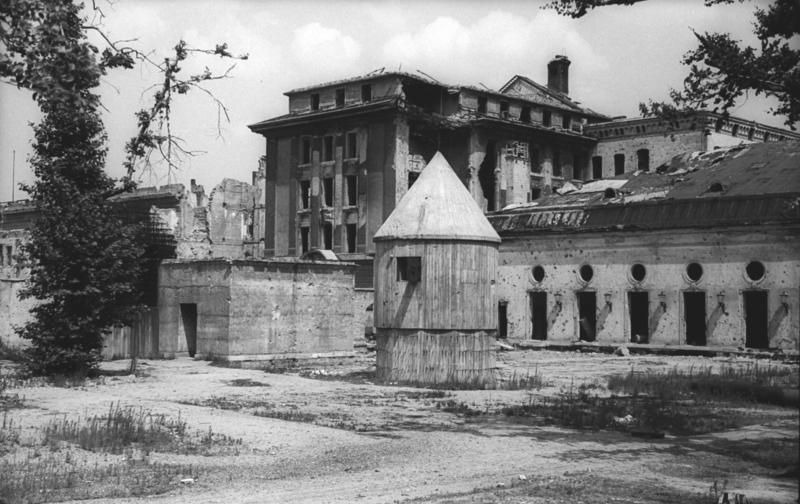
We will be taking a look at the bunkers used by Adolf Hitler and his entourage in Berlin. There were two bunkers connected to each other, Fuhrerbunker and the Reichskanzleibunker (Reich Chancellery bunker).
The Reich Chancellery bunker was initially constructed as a temporary air-raid shelter for Hitler (who spent very little time in the capital during most of the war). The increased bombing of Berlin led to an expansion of the complex as an improvised permanent shelter.
The elaborate complex consisted of two separate shelters:
- The Vorbunker ( “forward bunker”; the upper bunker), completed in 1936. Number 14 on the drawing below.
- The Führerbunker (number 10 on the drawing below), located 8.2 ft lower than the Vorbunker and to the west-southwest, completed in 1944.
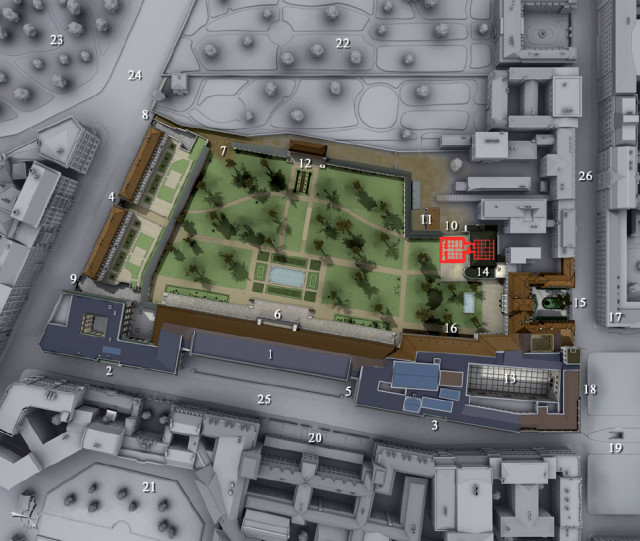
The same ventilation air turret as seen on the picture above but a slightly different angle, 1947
Reopening the bunker
These pictures were taken in August 1980 when the Reich Chancellery bunker was reopened for a short while; all pictures are courtesy of the German Bundesarchiv.
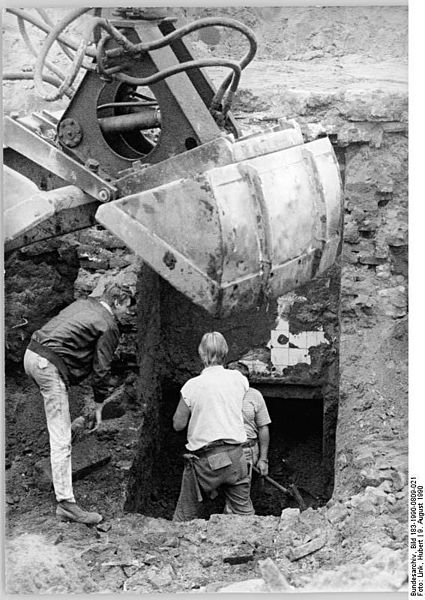
Inside the Reich Chancellery bunker
It was decided by the Russians that no trace of the Fuhrerbunker should remain. In 1947 all the building above ground were demolished and the bunker sealed. In the 1980s the Fuhrerbunker was dug up and then destroyed completely. The roof and interior walls were removed and what was left was
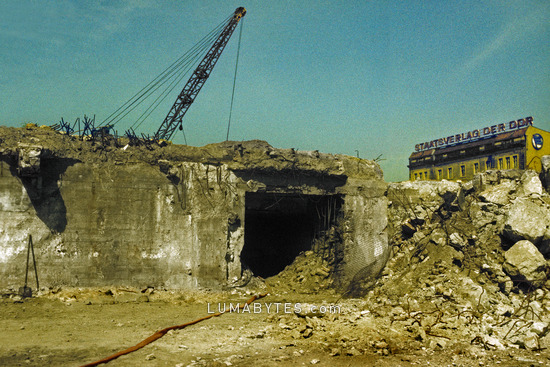
More pictures of the demolition can be seen on bunker-neue-reichskanzlei.lumabytes.com
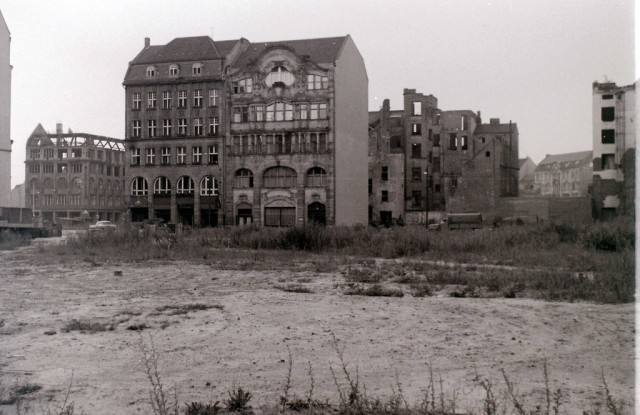
These two pictures show the location of the bunker as it is today.
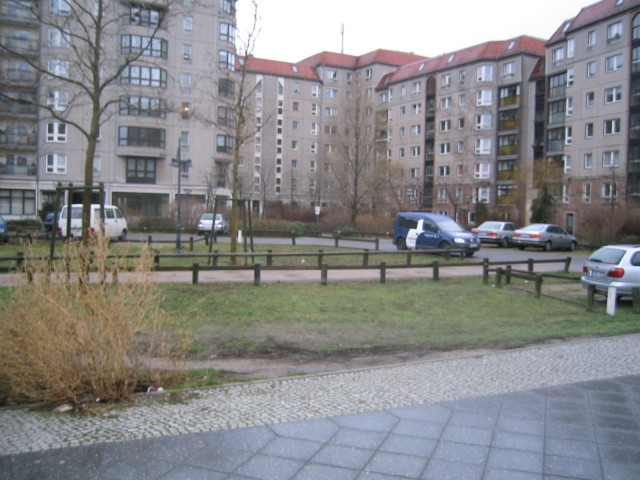
Last Trip Inside the Führerbunker In the 1980s
- Leichte Sprache Leichte Sprache
- Gebärdensprache Gebärdensprache
- Kontrast Kontrast
Der ehemalige "Luna Bunker" in der Schönholzer Heide
Gedenktafeleinweihung.
Am Mittwoch, den 24. April 2024 um 16:00 Uhr, wird im Volkspark Schönholzer Heide eine Gedenktafel in Erinnerung an den „Luna Bunker“ im damaligen Zwangsarbeitslager Schönholzer Heide eingeweiht.
Image gallery
- Erfahren Sie mehr
- Auf Facebook teilen Auf Facebook teilen
- Auf X teilen Auf X teilen
- Als E-Mail teilen Als E-Mail teilen
- Seite drucken Seite drucken
Sonne, Mond und Sterne
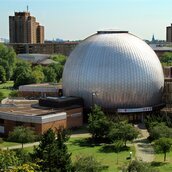
Vorträge & Lesungen

Offenes Atelier – Deine Kunstwerkstatt

More From Forbes
Now you can visit mussolini’s secret underground world war ii bunker in rome.
- Share to Facebook
- Share to Twitter
- Share to Linkedin
The secret bunkers built between 1942 and 1943, where Benito Mussolini and his family sought refuge ... [+] from Allied bombing in the private residence of Villa Torlonia
The dramatic underground bomb shelters of Fascist dictator Benito Mussolini have been renovated and are now open to the public. The network of fortified bunkers was constructed over 80 years ago to protect him and his family from Allied bombing.
Villa Torlonia was the private residence of Benito Mussolini and his family between 1925 and 1943, including his wife Rachele and children Edda, Vittorio, Buno, Romano, and Anna Maria. Originally, the villa was built in 1797 and was home to noble families for centuries. In 1806, the villa was converted into a spectacular palace with a large casino, as well as a large park with small lakes, a tennis court, and even horse stables. In 1925, the estate was given to Mussolini as his prime residence.
Located beneath Mussolini’s large compound, there are three underground structures. The first was in 1940 in his wine cellar under the Villas Lake and then inside the basement of the Casino Nobile, one of the buildings on his property. Despite being well constructed with four feet of reinforced concrete, including anti-gas doors and an air purification system, Mussolini never had the chance actually to use the bunkers before his arrest.
Layout of Mussolini bunker underneath Villa Torlonia
In 2011, a government employee working out of the Palazzo discovered a wooden trap door in one of the rooms. Once it was opened, they found a brick staircase leading 70 feet underground. This was the first time anyone knew that Mussolini had a bunker hidden below his Palazzo.
Trump Ally Warned Ex-President About Keeping Classified Docs—Over A Year Before Indictment, FBI Filing Says
Billionaire mark cuban issues post halving bitcoin warning amid unprecedented crypto fee price chaos, aew dynasty 2024 results winners and grades as swerve makes history.
When they reached the bottom, they found a passageway with Roman vaulted ceilings and even ancient mosaics on the walls. This continued to a modern cement compound divided into nine rooms. According to records, the ventilation system kept out all moisture, and the area was completely dry. Construction had even started on a secret passage for the dictator to use that would take him directly to the Vittorio Emanuele monument, but it was never completed.
In one of three deep bunkers with blast doors and multimedia installations
Mussolini added an armored bunker 20 feet underground in front of the Casino Nobile as the war continued. The bunkers were built in a cross shape with 50-foot-long corridors and 13-foot reinforced concrete. When construction began in 1942, the unfinished bunker had no watertight doors, or ventilation system.
I recently took a private tour of the bunker, and it thrilling to get an immersive experience of what it was like during the allied attacks. The bunkers have been outfitted with an amazing sound system that shakes and rocks the walls as gunfire and bombs hit the buildings above. Watching interactive video walls with what is imagined to be people inside the bunker at the time only adds to the dramatic feeling you get. The completely immersive virtual experience reenacts the 51 aerial bombings that hit Rome between July 1943 and May 1944.
Mussolini bunker entrance below his private residence of Villa Torlonia
The exhibit starts with the history of life in the Villa with Mussolini, complete with multimedia images and videos. Then you move through three rooms with projections of what life might have been like in the shelter and finally down a steep staircase into the bunker itself. After the tour, make sure to explore the grounds of the villa, which are open for free to the public, where the Allied forces took over as their military base following Mussolini's arrest.
The 'Rifugio e il Bunker' is included in the Villa Torlonia Museum tour and is open for guided tours for individuals with English tours on Saturdays and Sundays. Tickets are available online via the Museo Villa Torlonia website or in person at the ticket offices in Casino Nobile.
Casino Nobile above the secret bunkers built between 1942 and 1943, where Benito Mussolini and his ... [+] family sought refuge from Allied bombing

- Editorial Standards
- Reprints & Permissions
You Can Now Visit Mussolini’s Underground Bunker in Rome
The dictator constructed the shelters below his family’s residence after Italy entered World War II
/https://tf-cmsv2-smithsonianmag-media.s3.amazonaws.com/accounts/headshot/SarahKuta.png)
Daily Correspondent
:focal(4096x2731:4097x2732)/https://tf-cmsv2-smithsonianmag-media.s3.amazonaws.com/filer_public/12/8d/128d04c6-6bc6-40b6-a606-4ac06de0e287/26_bunker_villa_torlonia_ph_monkeys_video_lab.jpg)
In June 1940, Italian troops invaded the French Alps, marking the country’s entry into World War II. Behind the scenes, crews began building underground shelters to protect the fascist dictator Benito Mussolini and his family.
Now, 84 years later, the bunkers beneath Villa Torlonia , Mussolini’s home in Rome, have reopened to the public. Visitors can book 50-minute guided tours of the subterranean complex, which features an immersive multimedia exhibition.
This is not the first time members of the public have been allowed to visit the shelters. They opened for two years beginning in 2006, and occasional tours were offered in the years that followed, reports CNN ’s Julia Buckley.
/https://tf-cmsv2-smithsonianmag-media.s3.amazonaws.com/filer_public/d4/64/d464fb3b-b995-498b-8cdb-62a4a6cfd185/31_bunker_villa_torlonia_ph_monkeys_video_lab.jpg)
Mussolini lived at Villa Torlonia from 1929 to 1943 . The villa was also home to his wife, Rachele, and the couple’s children, Edda, Vittorio, Bruno, Romano and Anna Maria, according to Forbes ’ Jim Dobson.
When Italy entered the war, crews built three underground structures to protect Mussolini and his family from aerial bombings. They began work on the first one in 1940, when they repurposed an old wine cellar situated underneath a small lake on the property.
The following year, they built an air raid shelter in the basement of Casino Nobile, one of the villa’s buildings. They reinforced the walls with four-foot-thick concrete, installed an air purification and exchange system and added gas-tight doors.
Finally, in late 1942, they began building an armored bunker nearly 20 feet underground in front of Casino Nobile. It was shaped like a cross and protected by a 13-foot-thick layer of concrete—but it was never finished. By the time Mussolini was arrested on July 25, 1943, workers hadn’t yet installed watertight doors, bathrooms or a ventilation system.
/https://tf-cmsv2-smithsonianmag-media.s3.amazonaws.com/filer_public/32/49/3249156b-e109-478c-a6db-0eb25dd6df9d/37_bunker_villa_torlonia_ph_monkeys_video_lab.jpg)
The city of Rome purchased the property in 1977 and opened it to the public in 1978. Today, it’s a museum and a park.
On the tours, visitors can walk inside the air raid shelter and bunker beneath Casino Nobile, though the repurposed wine cellar remains off-limits. As they wander through the two structures, they’ll see images projected on the walls and hear sounds meant to transport them back in time.
The exhibition begins with Mussolini’s life at Villa Torlonia, where he hosted parties, ceremonies, tennis matches and other events. Next, visitors will learn about Italy’s entry into the war and what hiding out in a bunker during a bombing would have been like.
/https://tf-cmsv2-smithsonianmag-media.s3.amazonaws.com/filer_public/7a/cf/7acf0efc-74a6-4765-a338-27e036e00c24/04_bunker_villa_torlonia_ph_monkeys_video_lab.jpg)
Rome suffered 51 Allied bombings between July 1943 and May 1944. The exhibition recalls these raids, with a particular focus on those that occurred in the city’s San Lorenzo neighborhood , which killed more than 3,000 people.
A series of projections also shows the “double perspective of those who bomb and do not perceive the effects from above, and those who suffer the consequences from below,” according to the tour website , via Google Translate.
At the end of the tour, visitors climb down a steep staircase into the unfinished bunker, where curators have added sounds and ground vibrations to simulate the experience of an air raid.
Get the latest stories in your inbox every weekday.
/https://tf-cmsv2-smithsonianmag-media.s3.amazonaws.com/accounts/headshot/SarahKuta.png)
Sarah Kuta | READ MORE
Sarah Kuta is a writer and editor based in Longmont, Colorado. She covers history, science, travel, food and beverage, sustainability, economics and other topics.

COMMENTS
The Berlin Underworlds take you on guided tours through historic bunkers, flak installations and old brewery cellars. Take an exciting discovery tour beneath the streets of the metropolis with a visit to the Berliner Unterwelten. Learn more about the secret history of the city. Descend into bunkers as well as tunnel systems.
This complex (both Vorbunker and Führerbunker) consisted of a collection of around 30 rooms, with the Führerbunker 8.5m underground and built with a concrete roof more than 3 metres thick. Here in the damp and sparsely furnished interior of this concrete hideaway, Hitler would orchestrate the downfall of the capital of the Third Reich, marry ...
We recommend using this Google map for exact directions to the bunker location. The bunker location is between Potsdamer Platz and Brandenburger Tor, just a block away from the Holocaust Memorial. This location is a part of just about every walking tour that covers downtown Berlin. Today, you will find some typical 1980's East German concrete ...
Public Tours; Tours for Groups; Important notes; Public Tours; Tour 1 Dark Worlds; Tour 2 From Flak Towers to Mountains of Debris; Tour 3 Bunkers, Subways and the Cold War; Tour D Tunnel and Bunker Dresdener Straße; Tour F The Fichtebunker Time Capsule; Tour M Under the Berlin Wall; Tours for Groups; Tour 1 Dark Worlds; Tour 3 Bunkers, Subways and the Cold War; Tour M Under the Berlin Wall
In an emergency, 1,318 people were to shelter here for up to 48 hours. After a short ride via the U-Bahn to Pankstrasse station, we offer a glimpse into the workings of a "modern" bunker, which was intended to protect the citizens of West Berlin in case of a full-blown nuclear war. This "multi-purpose" facility, built in 1977 along with ...
Experience WW2 bombing raids through the eyes of civilians. Every day, hundreds of people walk past a green door in the Gesundbrunnen underground railway station, unaware that, behind it, lies a subterranean labyrinth full of history just waiting to be experienced. Berlin was the nerve centre of the Third Reich and therefore one of the main ...
Tours and Tickets by Berliner Unterwelten. City Sightseeing Berlin Hop-On Hop-Off Bus Tour. 602. Audio Guides. 2 hours. Create your own sightseeing itinerary with a hop-on hop-off City Sightseeing tour of Berlin—a fast, flexible, and cost-effective…. Free cancellation. from. $27.
Berlin Underground Bunker Tours. Photo exhibitions form much of the tour when underground in what is a former civil defence shelter and it brings the stories to life. You will catch a glimpse at a room that formed part of an air-raid shelter on the Berlin tunnels tour, although you will have to take the underground bunker tour (Tour 3) to delve ...
And visitors to Berlin can take a bunker tour to discover this hidden network of tunnels and shelters underground. Tours are offered by the organization "Berliner Unterwelten e.V.", an organization consisting of about 350 members of diverse professional backgrounds. ... Visit 3 of the original 7 floors of this tower, and take a look at the ...
The Berlin Story is located in a bunker at Anhalter Station. A compact site, the museum has been designed to take you on a journey through 800 years of Berlin life with 30 different displays. ... The GDR section includes the Palace of the Republic's impressive porcelain service. A visit to the Berlin Story gives a taste of what is available in ...
The Hitler Bunker, located in central Berlin, was a subterranean complex constructed during World War II. It served as Hitler's command center and living quarters during the final months of the war. The bunker was heavily fortified and designed to withstand bomb attacks. 2. Booking a Tour. To visit the Hitler Bunker, you'll need to join a ...
2. Planning Your Visit 2.1 Location. The Hitler Bunker is located in Berlin, Germany. You can find it near the Brandenburg Gate in the Mitte district. The exact address is Wilhelmstrasse 77. The bunker has been preserved and restored, offering visitors a chance to explore its underground chambers. 2.2 Opening Hours and Tickets
Berliner Unterwelten was founded in 1997 to explore, document and preserve the city's subterranean architecture. The organization's base is in a former air raid bunker in the Gesundbrunnen ...
4. Site Of Hitler's Bunker. When visiting Berlin, the site of Hitler's bunker is a must-see.In the final days of the war in Europe, Adolf Hitler, his mistress Eva Braun, and members of the Nazi inner circle retreated to an underground bunker in Berlin. The former air raid shelter served as their final headquarters.
Führerbunker Führer's bunker July 1947 photo of the rear entrance to the Führerbunker in the garden of the Reich Chancellery. The corpses of Hitler and Eva Braun were burned in a shell hole in front of the emergency exit at left; the cone-shaped structure in the centre served for ventilation, and as a bomb shelter for the guards. General information Town or city Berlin Country Nazi Germany ...
The bunker was so well built that the Soviets blew up what they could and buried the rest. It has never been recovered as a tourist site because of the threat of it becoming a Neo-Nazi attraction. So, consider when you visit that under your feet, Hitler's bunker is moldering away under the ground water. There is nothing really to see above ground.
The complex consisted of two shelters: a Vorbunker (upper bunker) and the Führerbunker. The first one was constructed in 1936, the latter in 1944/5. When the Allied forces were closing in on Berlin, the temporary shelter was transformed to a more permanent residence. The section of the Führerbunker lay 2,5 metres lower than the upper bunker ...
Explore the devastated ruins of a WW2 fortress. In 1940, Hitler ordered the construction of six anti-aircraft, or "Flak" towers to defend Berlin from enemy aircraft. Of these six, only three were built, and after the war they were "demilitarised" or blown up. However, the Flak tower in Humboldthain Park in Gesundbrunnen was only ...
See historic Berlin on a walking tour through the city's most significant places. Take an informative, thought-provoking journey that brings the history of Berlin alive. Cover all of Berlin's main sights, from the Berlin Wall to the site of Hitler's bunker. Visit the Brandenburg Gate, Checkpoint Charlie, Berlin Cathedral, Palace Square, and ...
Bunker (Berlin) Coordinates: 52°31′24″N 13°23′2″E. Der Bunker. 1km. 0.6miles. Bunker. Location of the Bunker in Berlin. The Bunker (also Reichsbahnbunker Friedrichstraße) in Berlin-Mitte, Germany, is a listed air-raid shelter that was constructed in 1943 and is nowadays used as an art gallery and private apartment.
Published March 6, 2024. Updated April 3, 2024. As Soviet troops advanced on Berlin in 1945, Adolf Hitler died by suicide inside his sprawling concrete Führerbunker buried 30 feet beneath the city where he'd spent the last 105 days of his life. Sueddeutsche Zeitung Photo / Alamy Stock Photo A Soviet soldier sits in the study of the ...
A Berlin Story Bunker tour is set in a recreation of the infamous Führerbunker, where Adolf Hitler spent his last days. The tour, a frightening reminder of a war that claimed 70 million lives, is understandably intimidating and visitors can only visit the bunker with a guide. A free audio guide is available in English, and most of the signage ...
A rare picture of Hitler meeting Großadmiral Karl Dönitz taken inside the Fuhrerbunker, shortly before his suicide. Winston Churchill exits the Fuhrerbunker after an inspection, note the cans During a visit in 1945, Churchill sits on one of the damaged chairs from Hitler's bunker in Berlin. The front of the new Reich Chancellery, after it ...
Der Bunker liegt im südwestlichen Teil der Schönholzer Heide nördlich der Hermann-Hesse-Straße. Ab Mitte der 1930er-Jahre errichteten die Nationalsozialisten im Zuge der Kriegsvorbereitung in ganz Deutschland Luftschutzbunker - so auch den sogenannten „Luna Bunker". Sein Name erinnert an die ehemalige Nutzung des Areals als ...
Mussolini's air raid shelter and Bunker at Villa Torlonia. Tourists can visit the bunkers with simulated overhead bombings in an immersive experience as 51 aerial bombings hit Rome between July ...
Now, 84 years later, the bunkers beneath Villa Torlonia, Mussolini's home in Rome, have reopened to the public. Visitors can book 50-minute guided tours of the subterranean complex, which ...